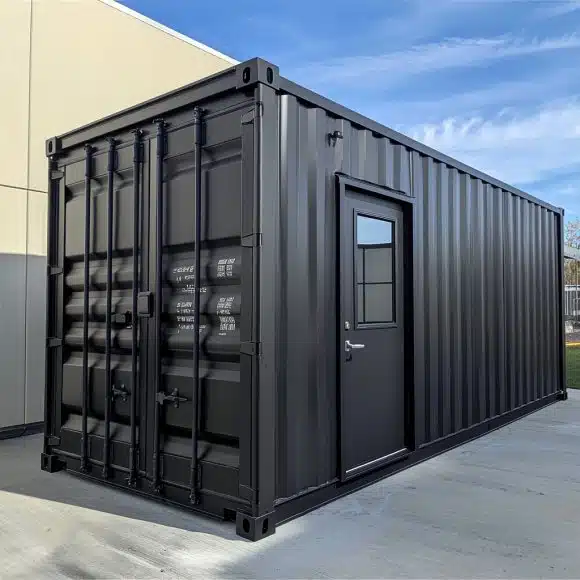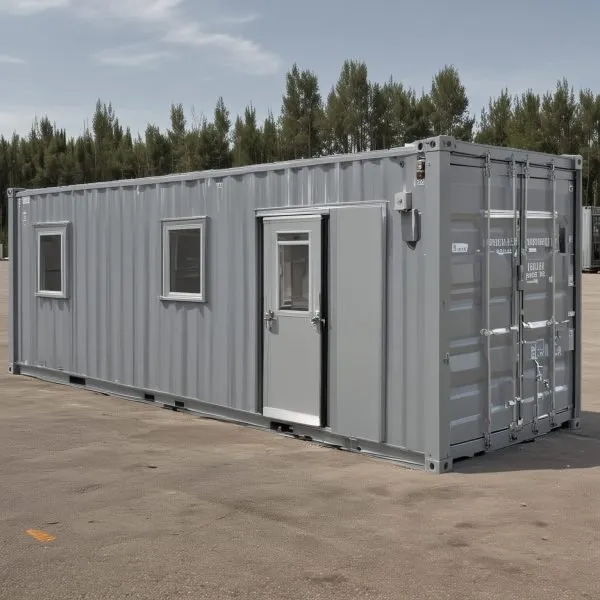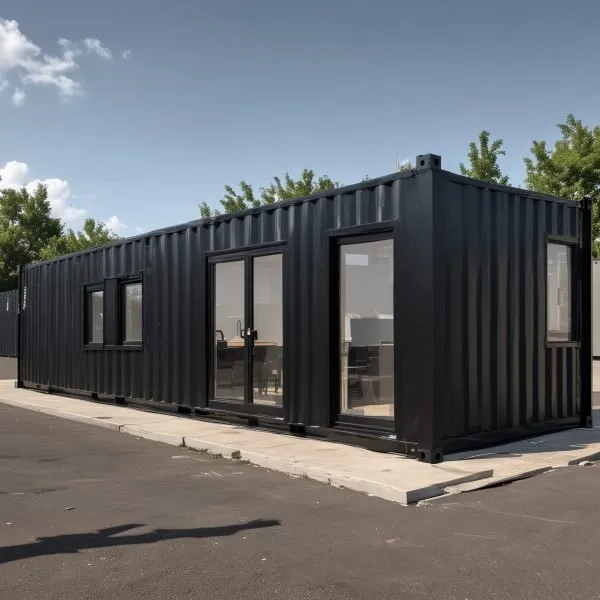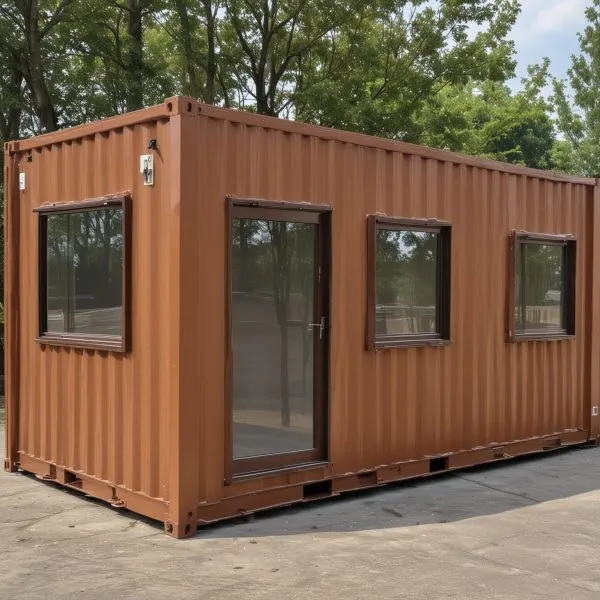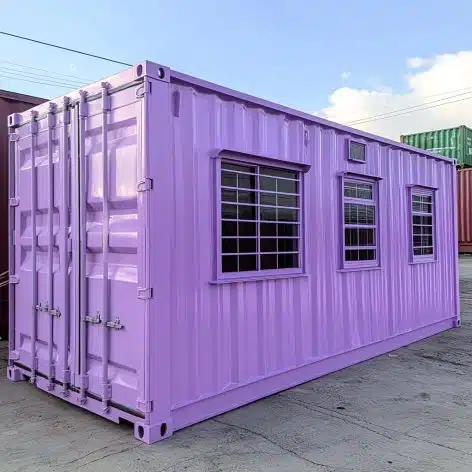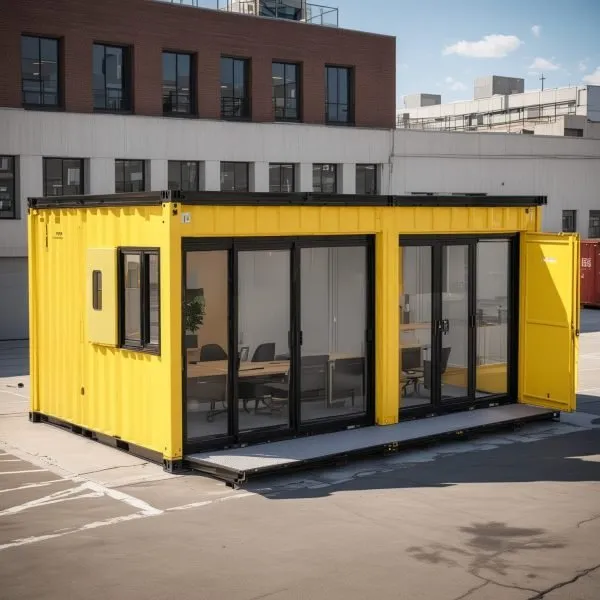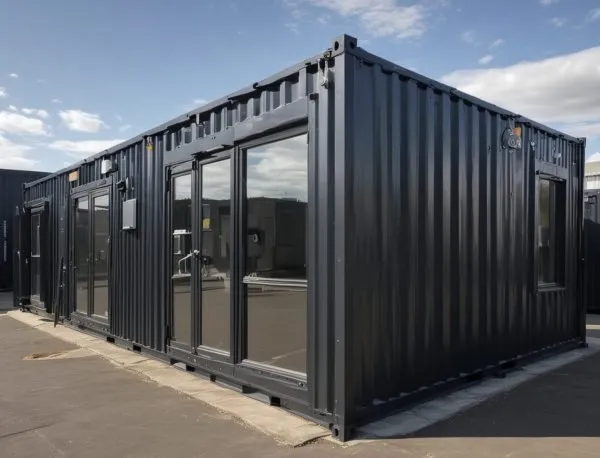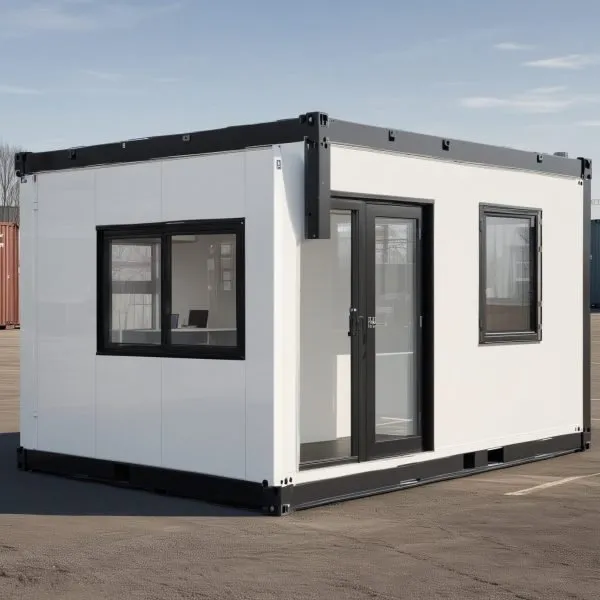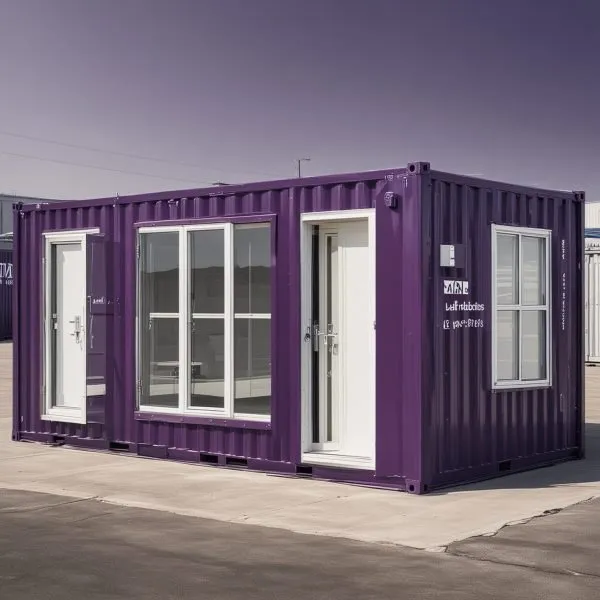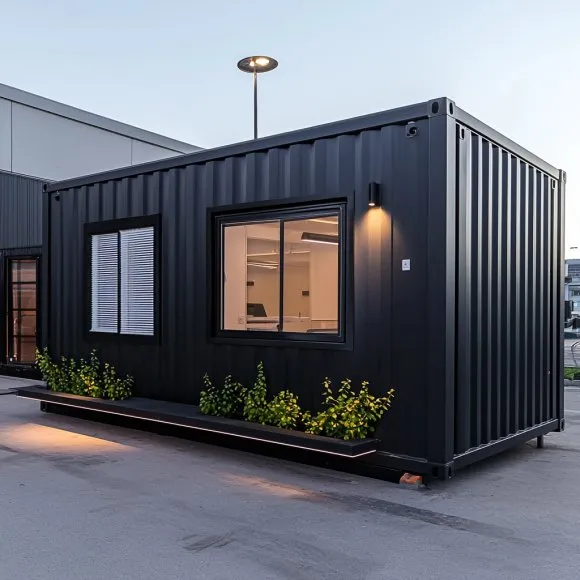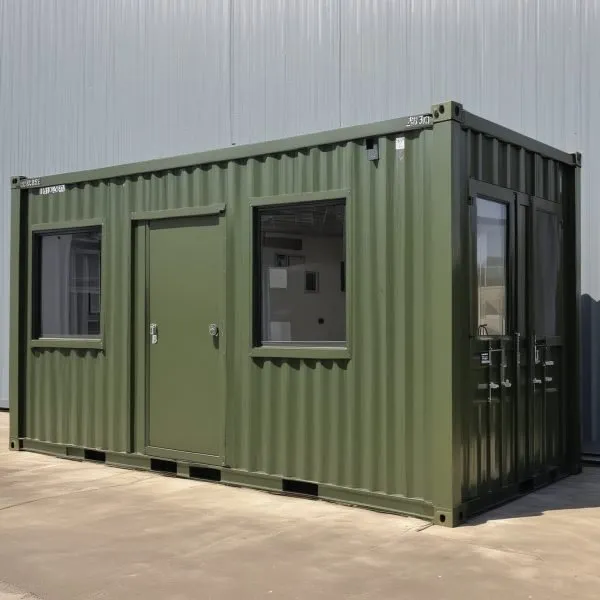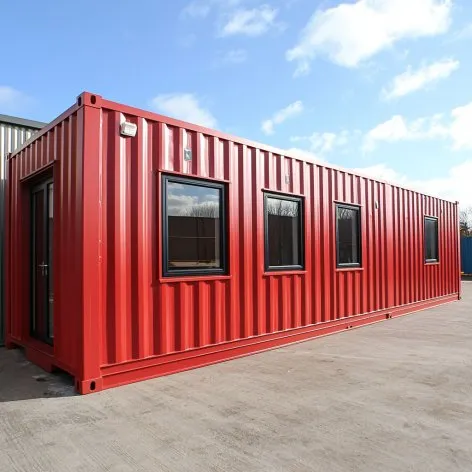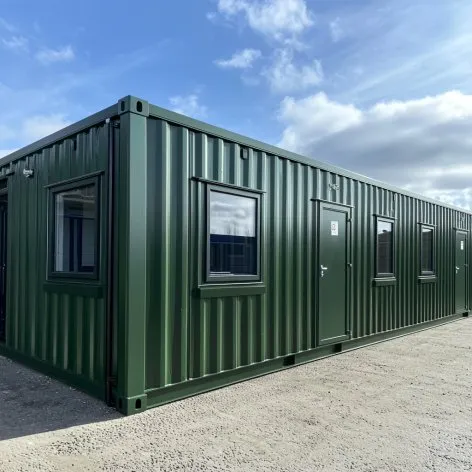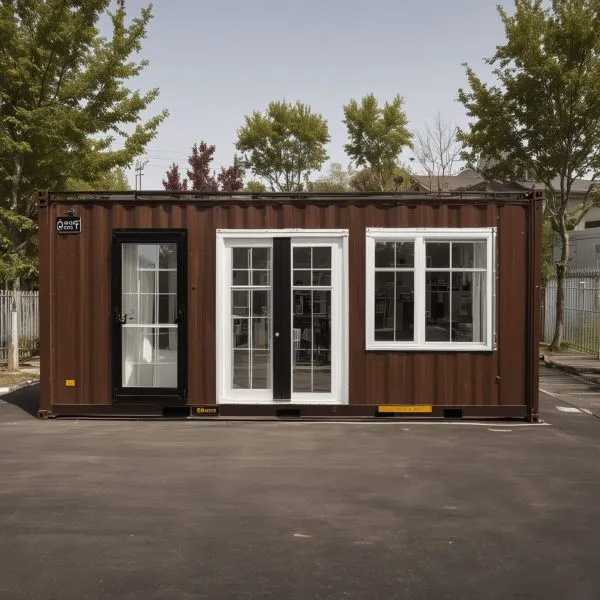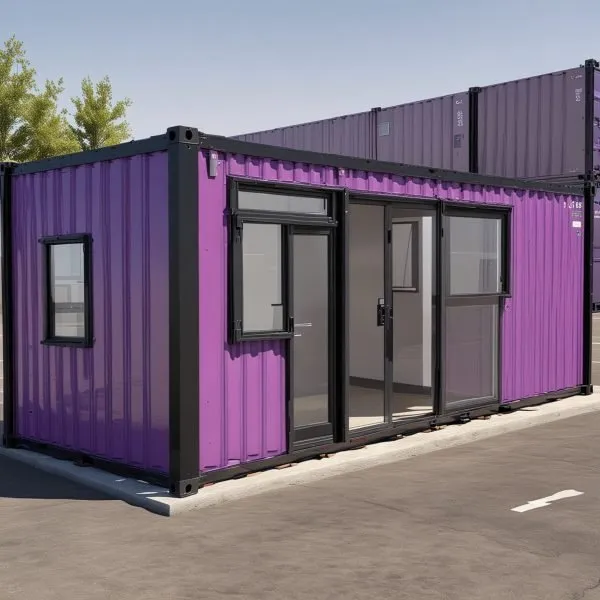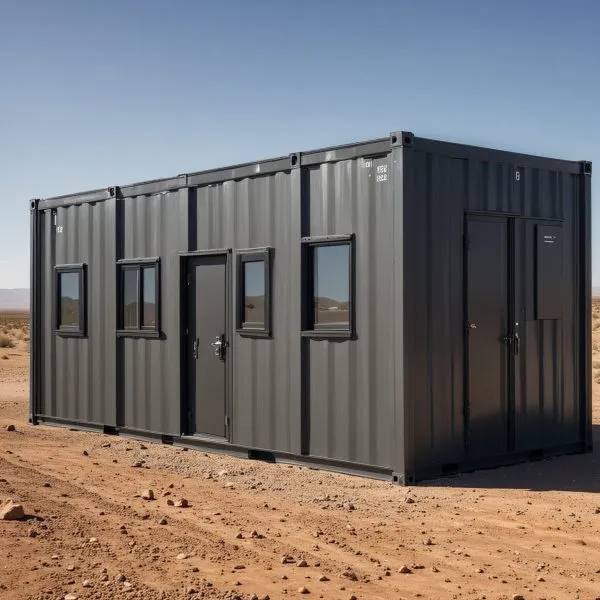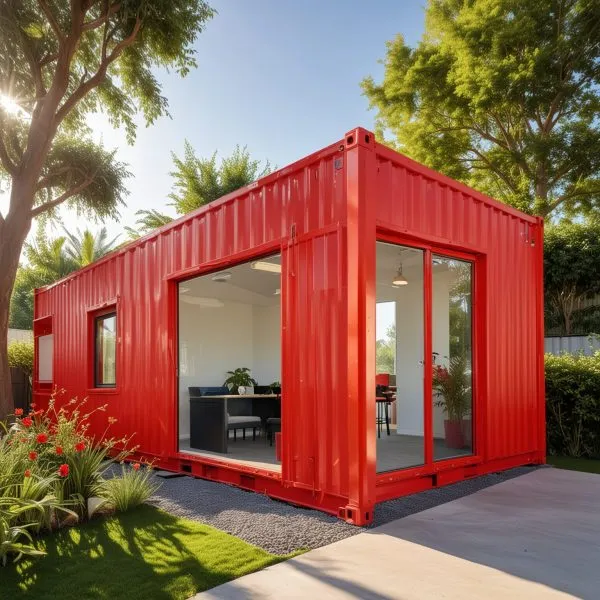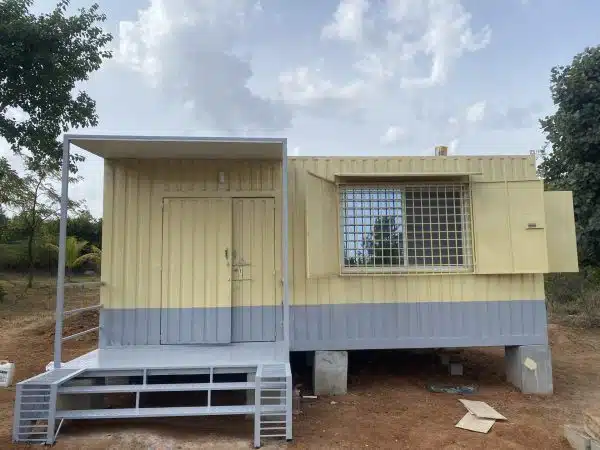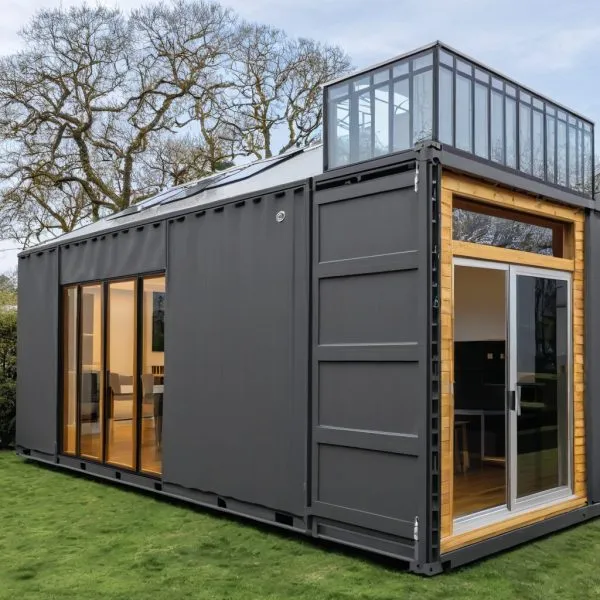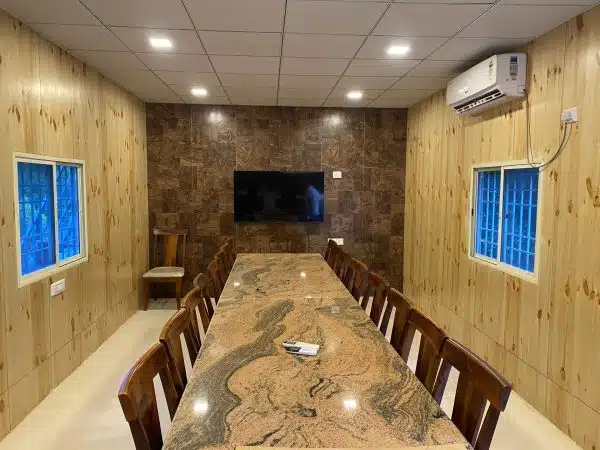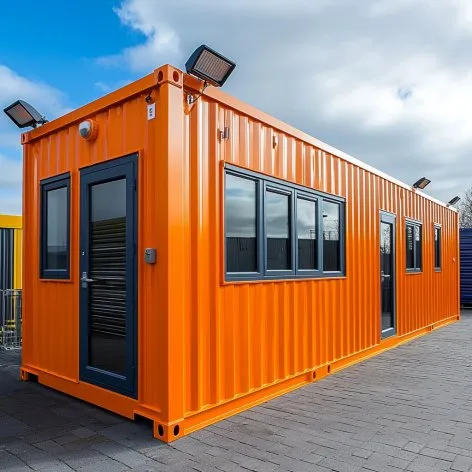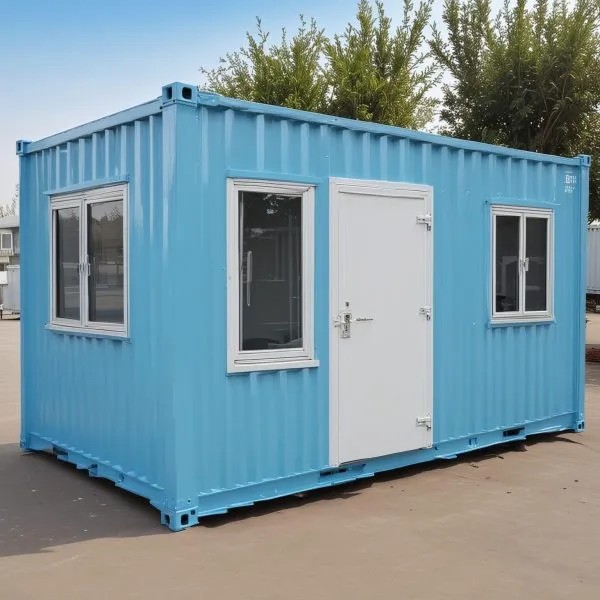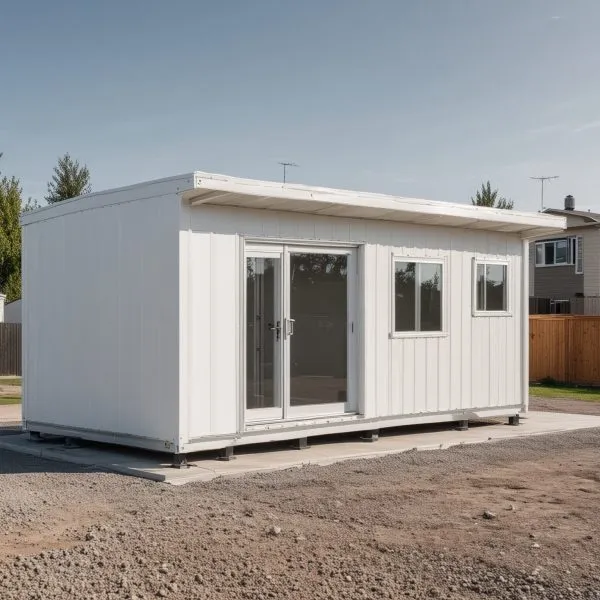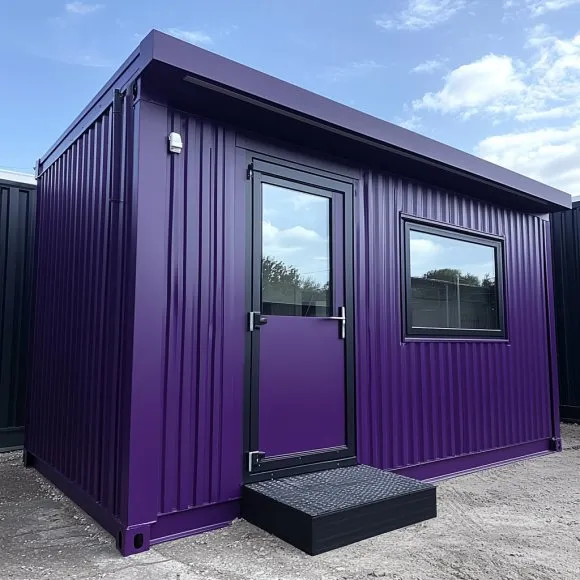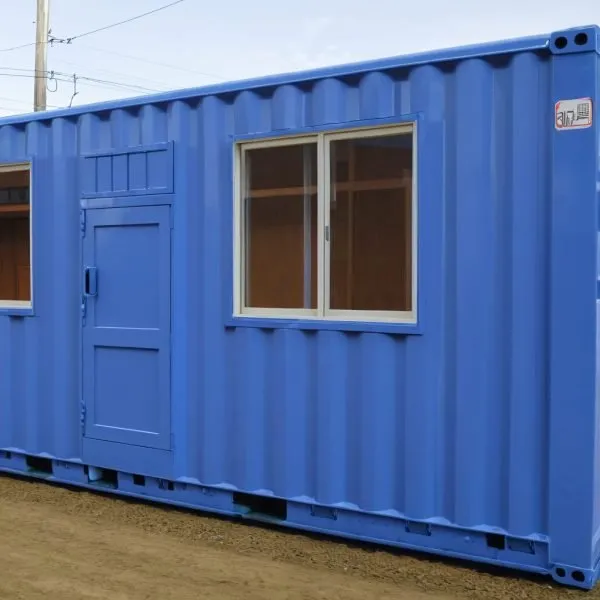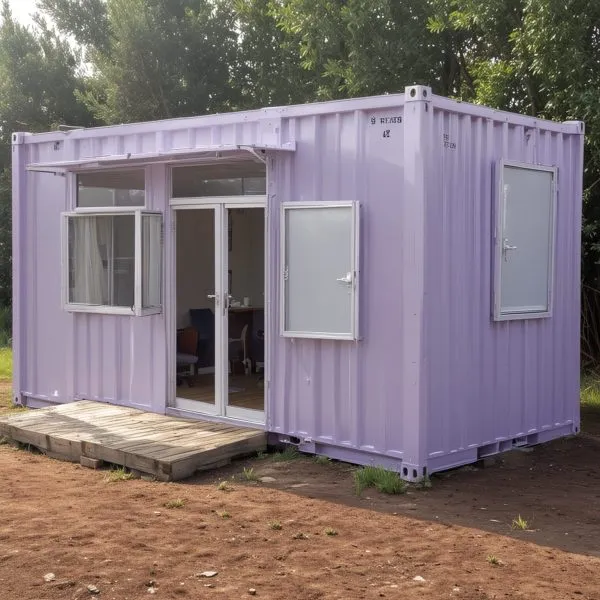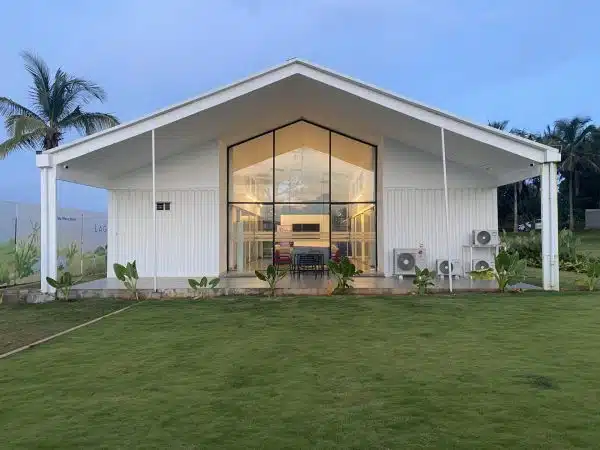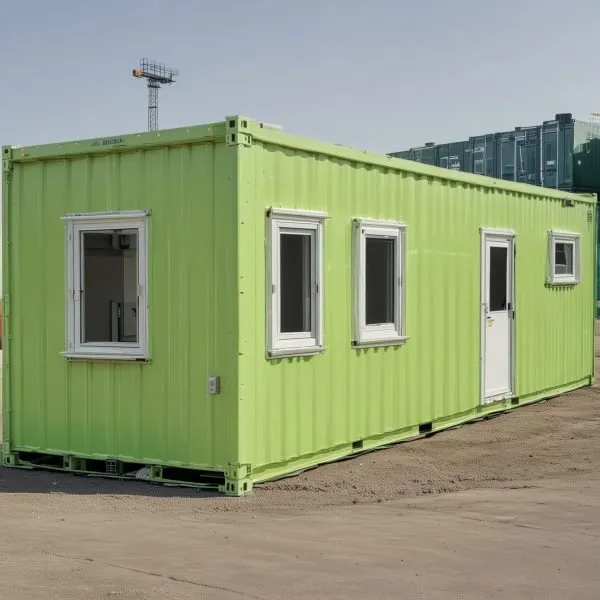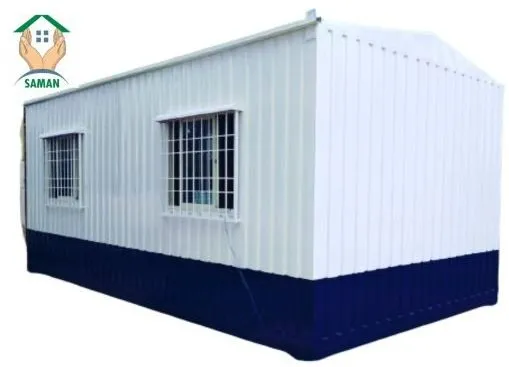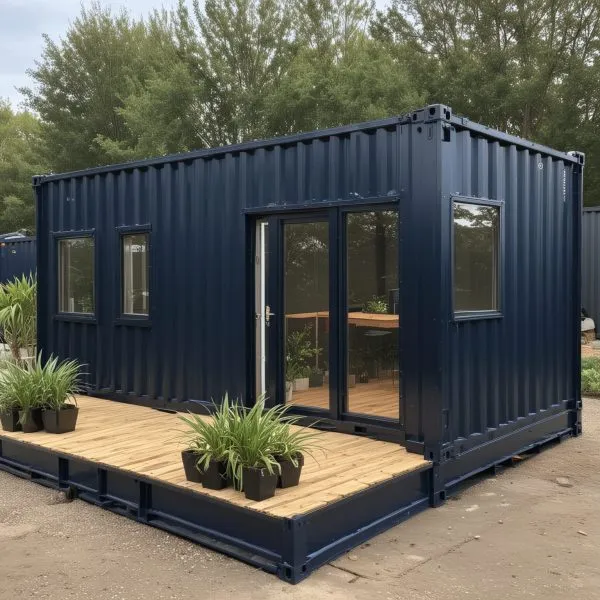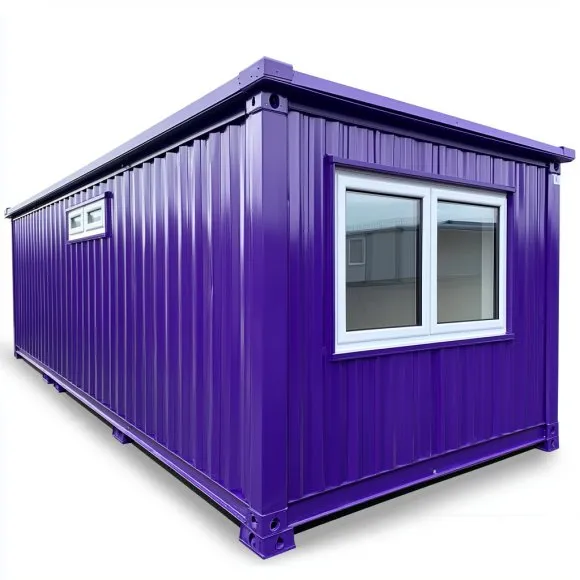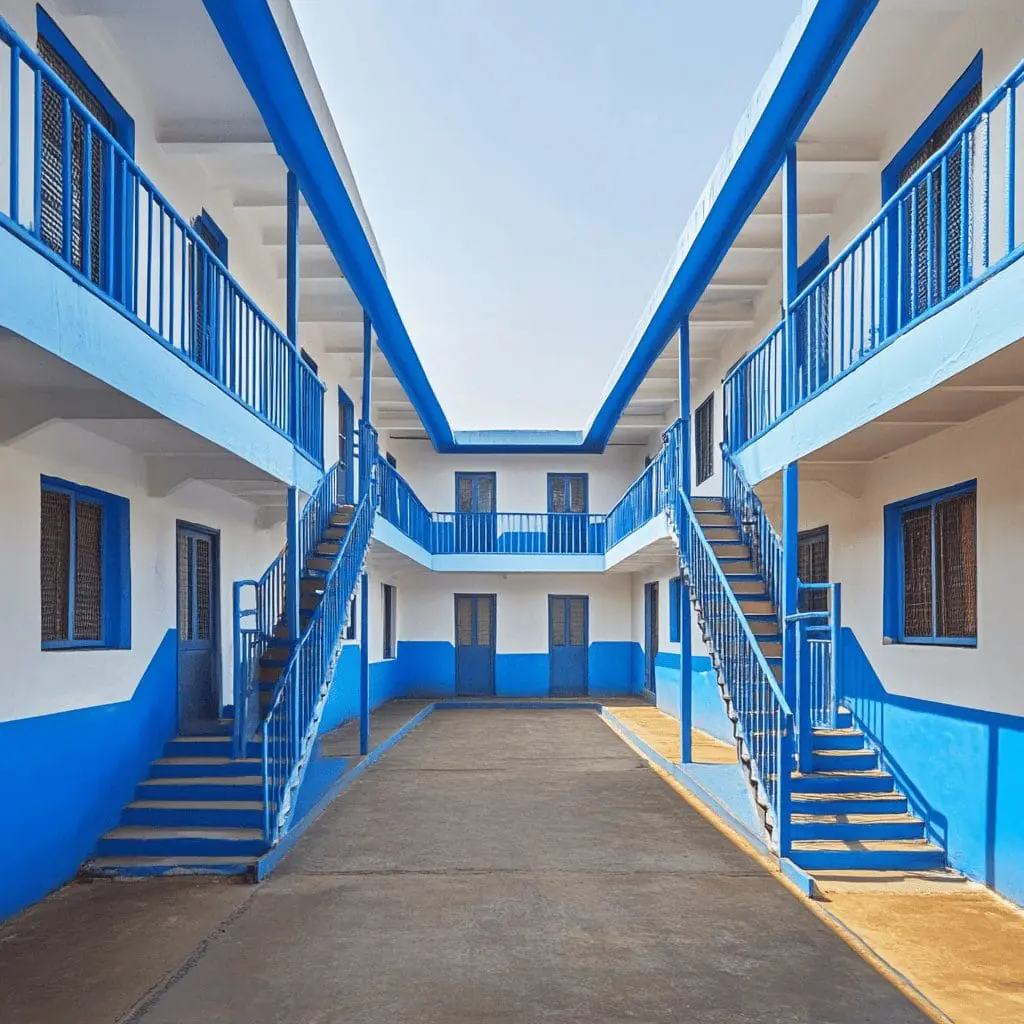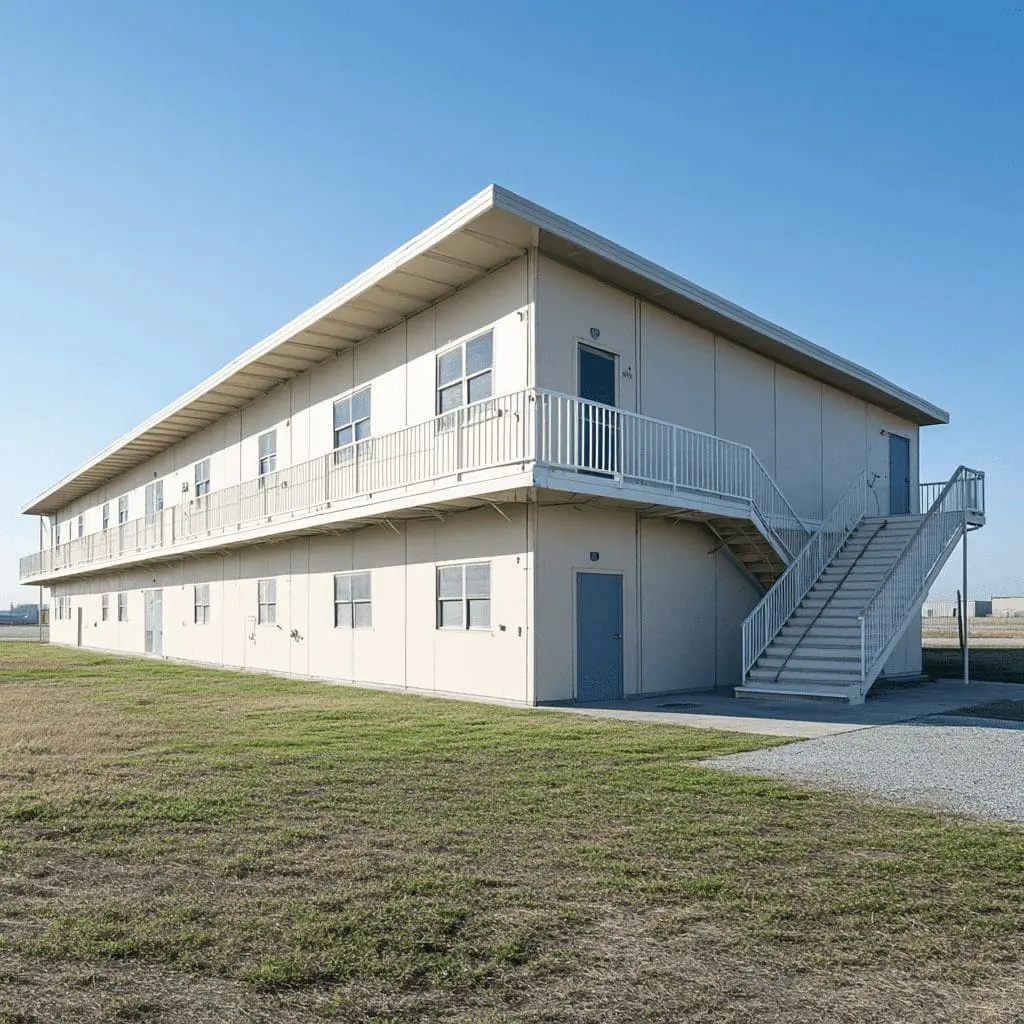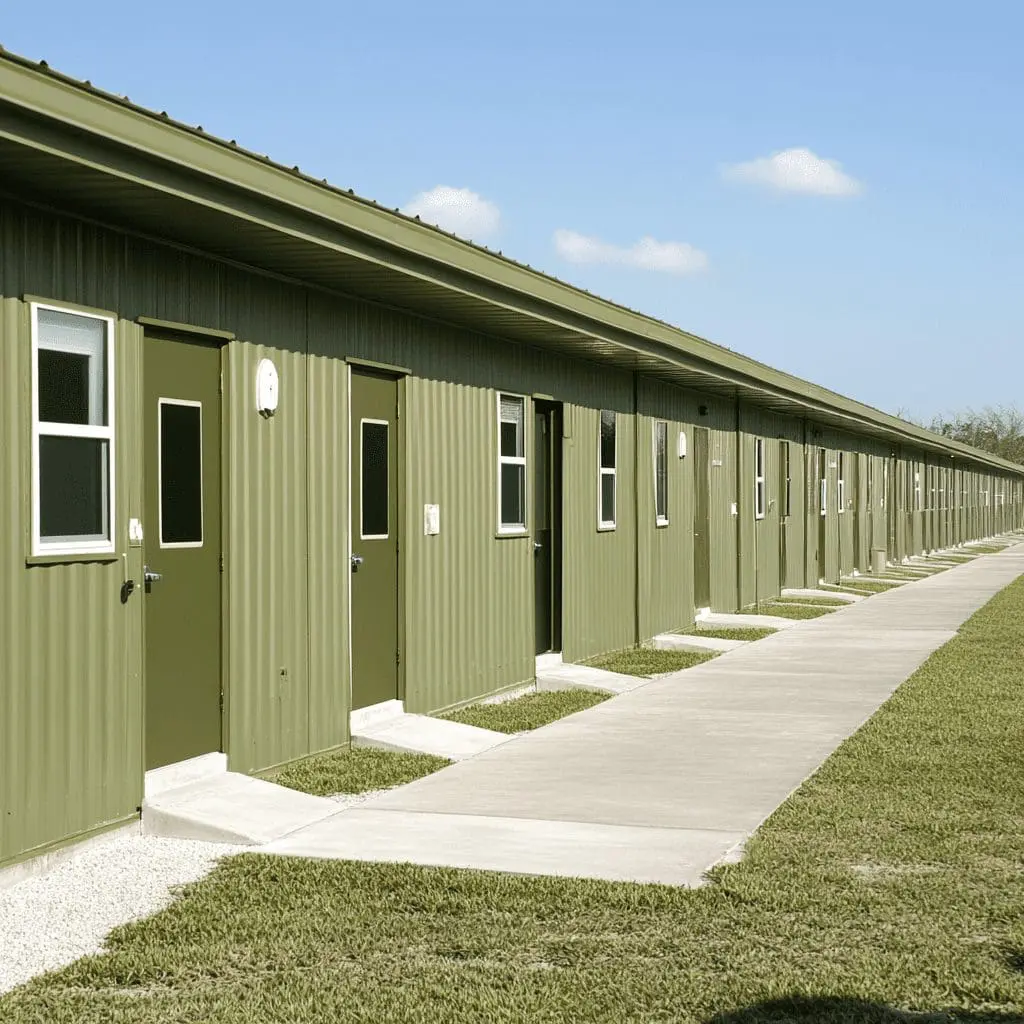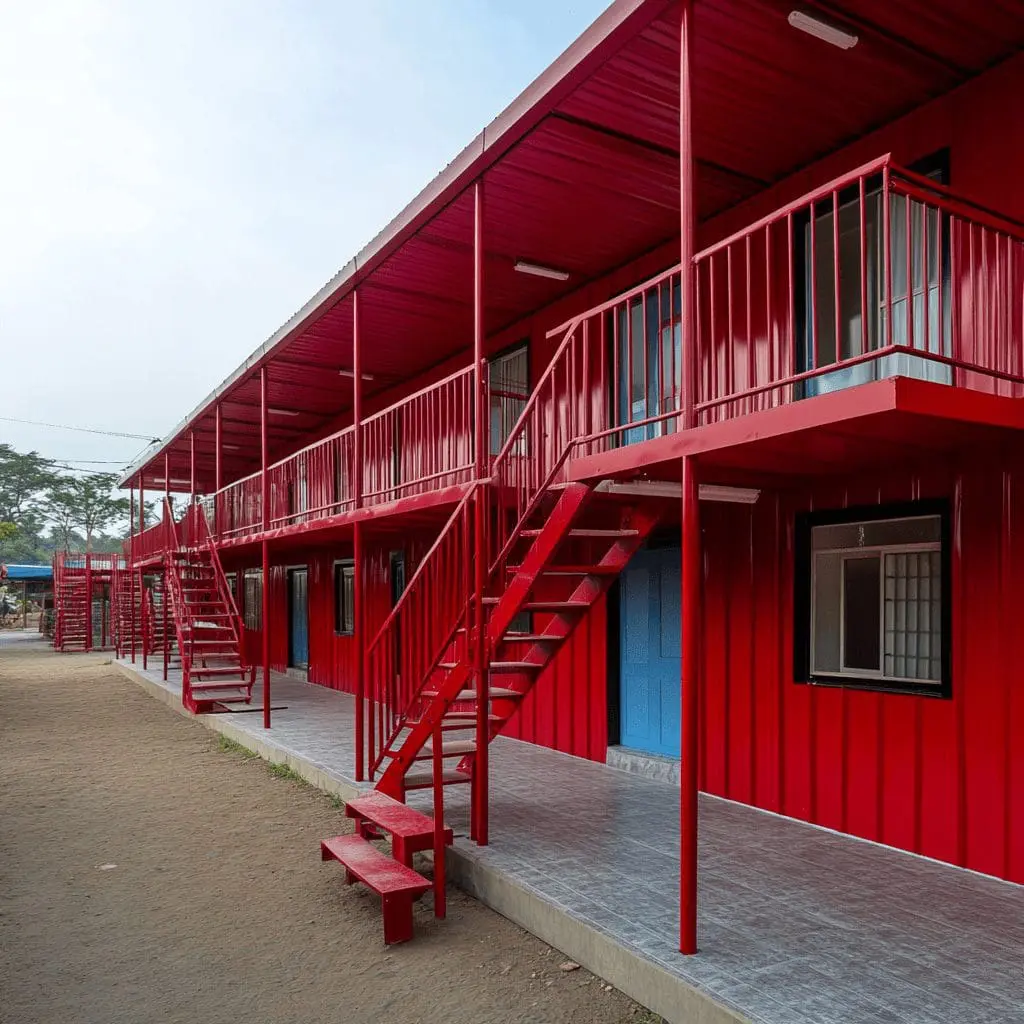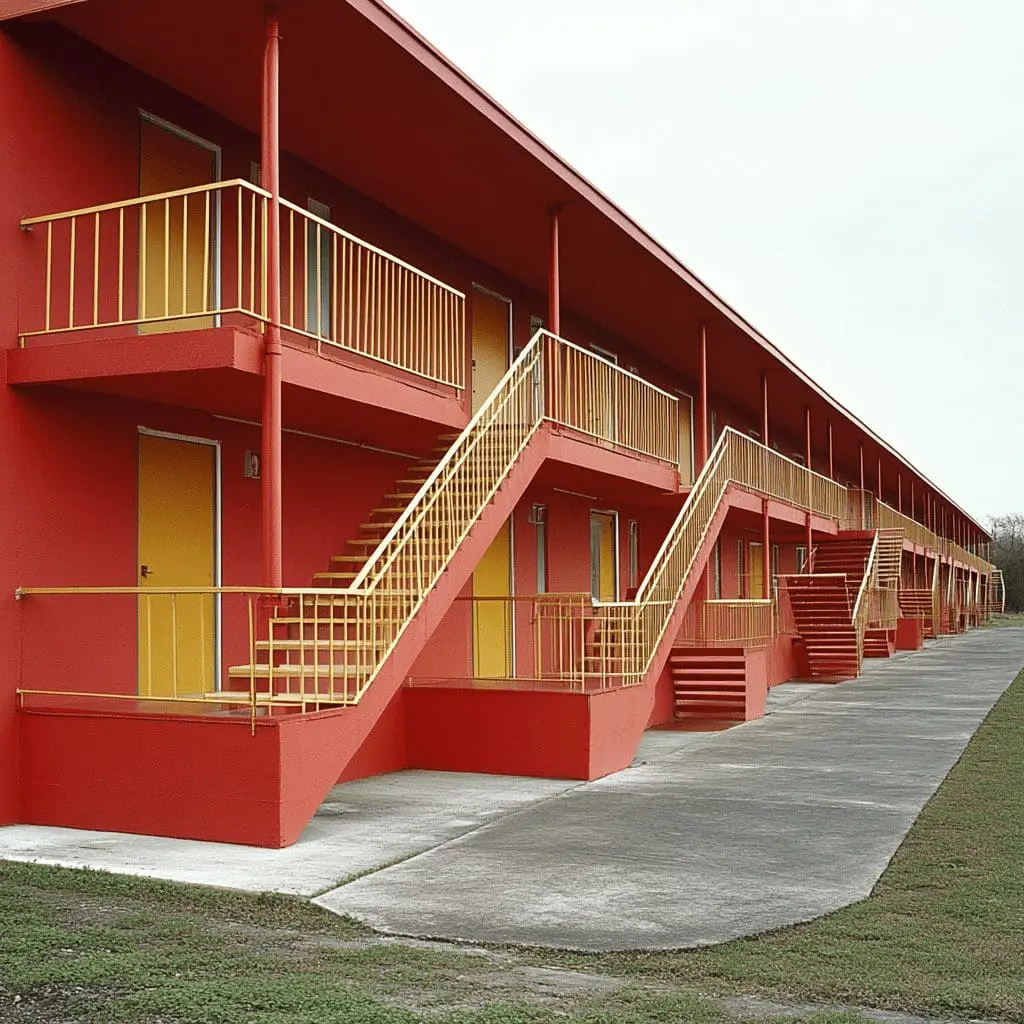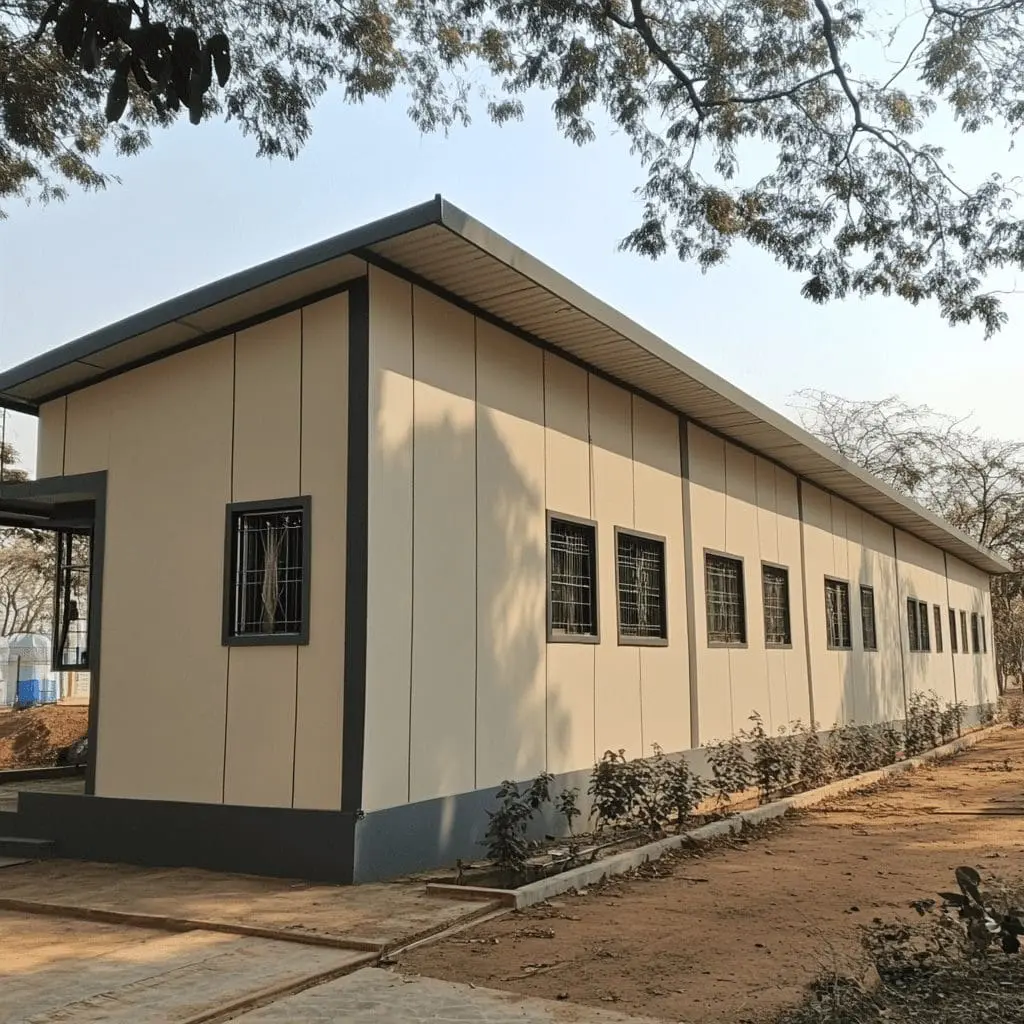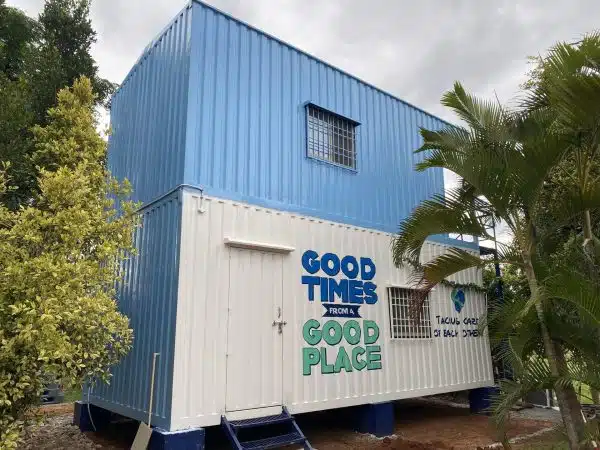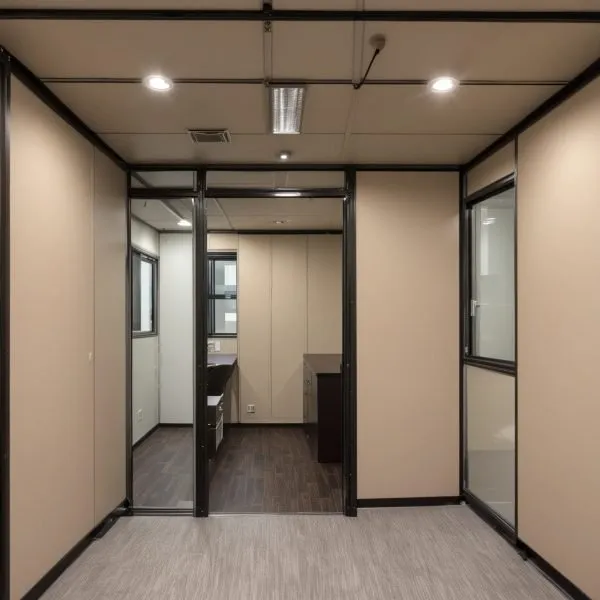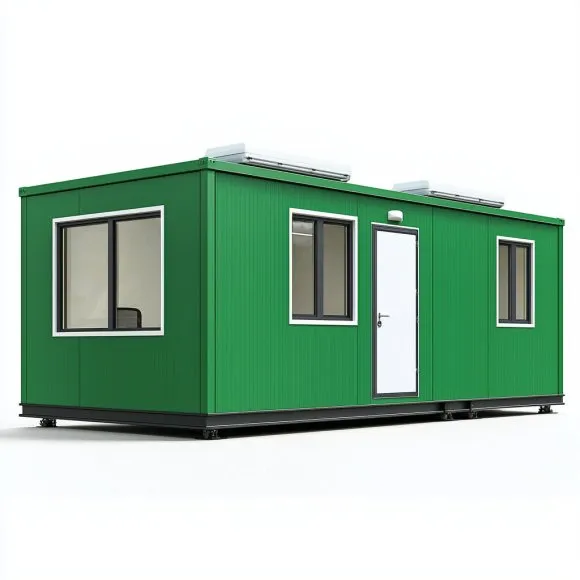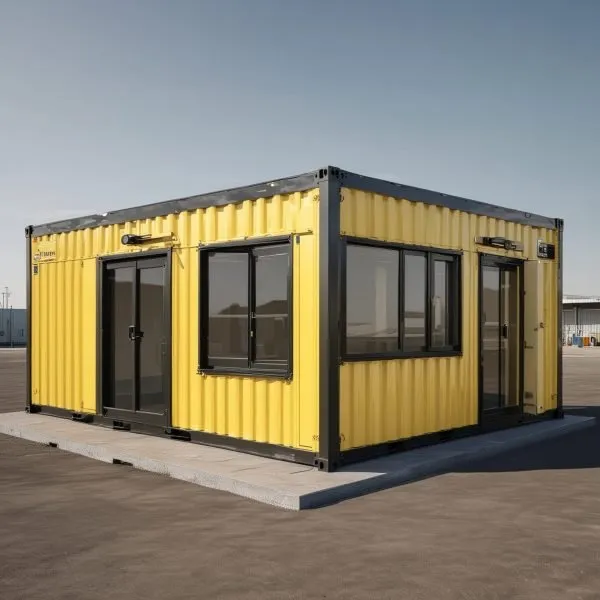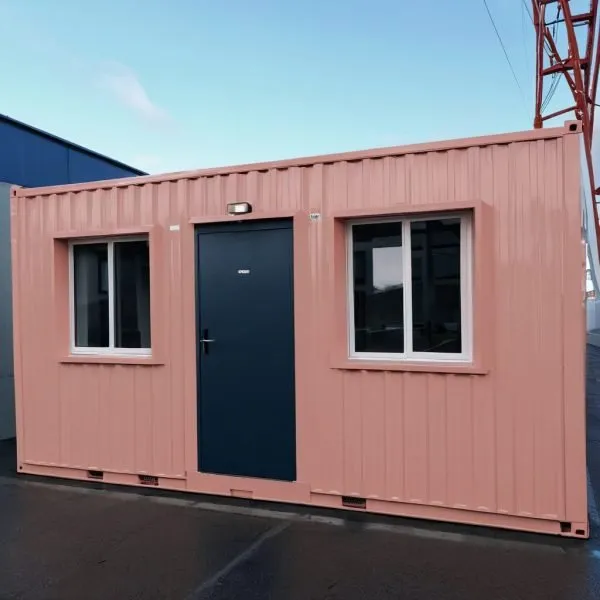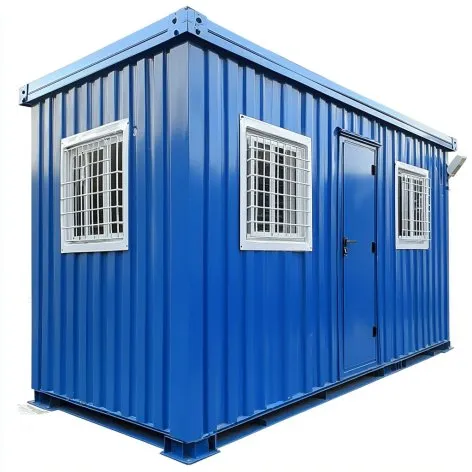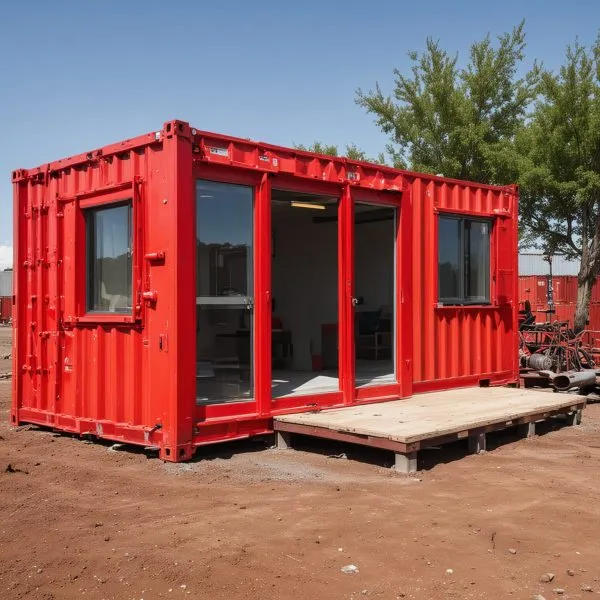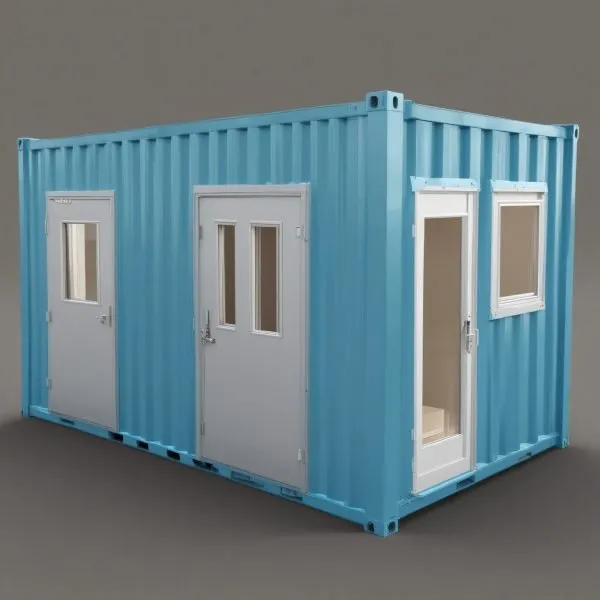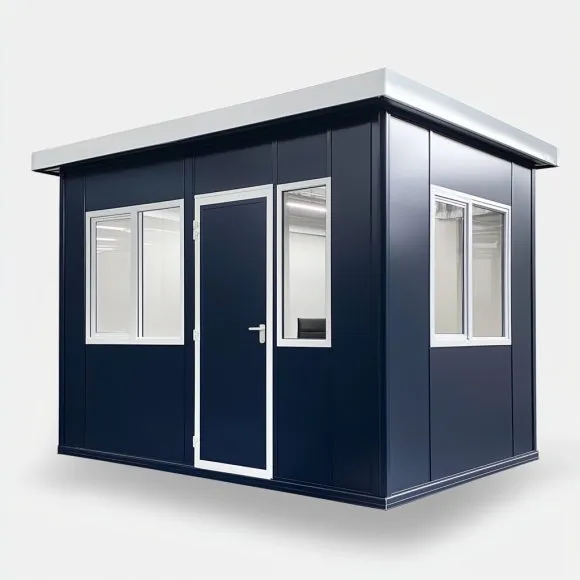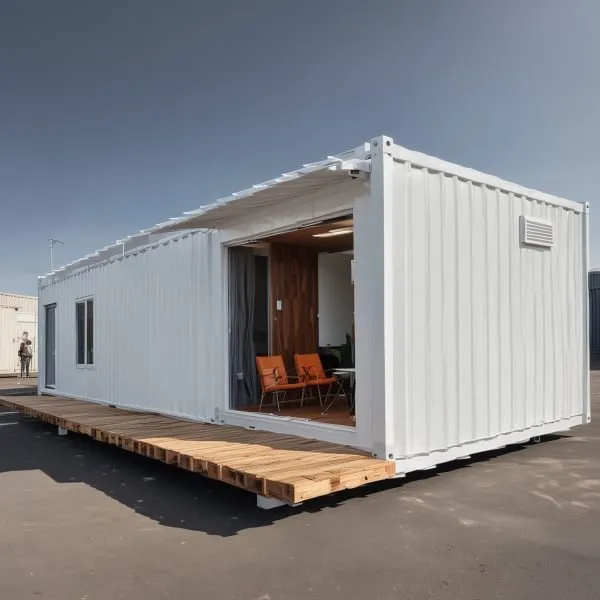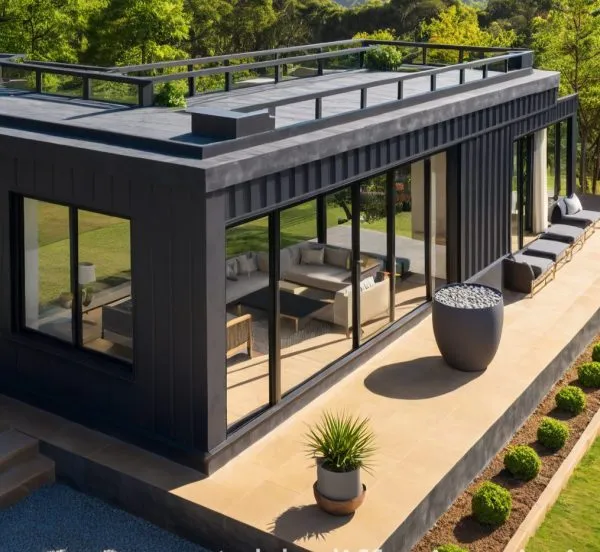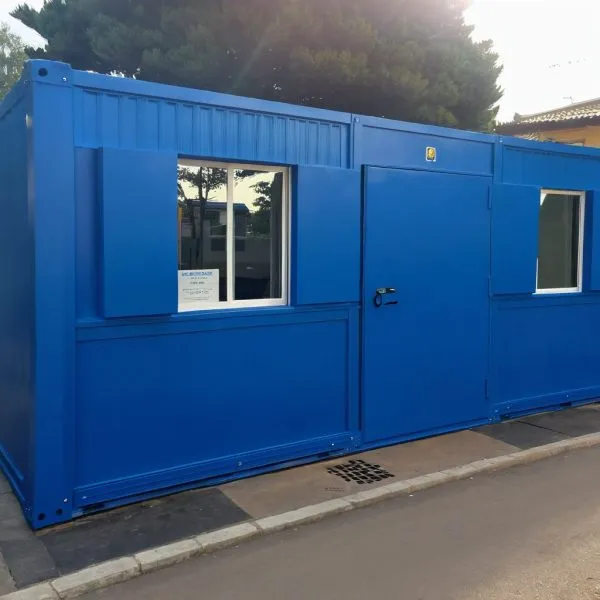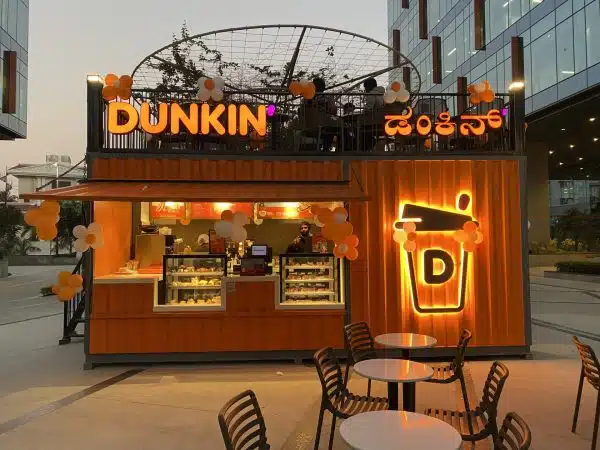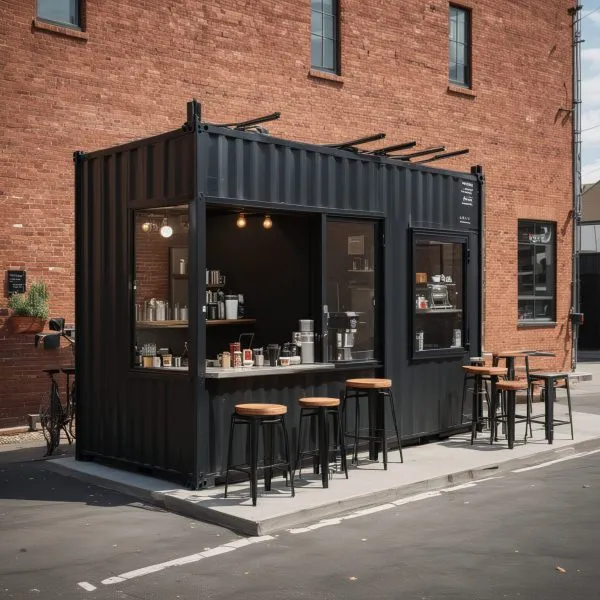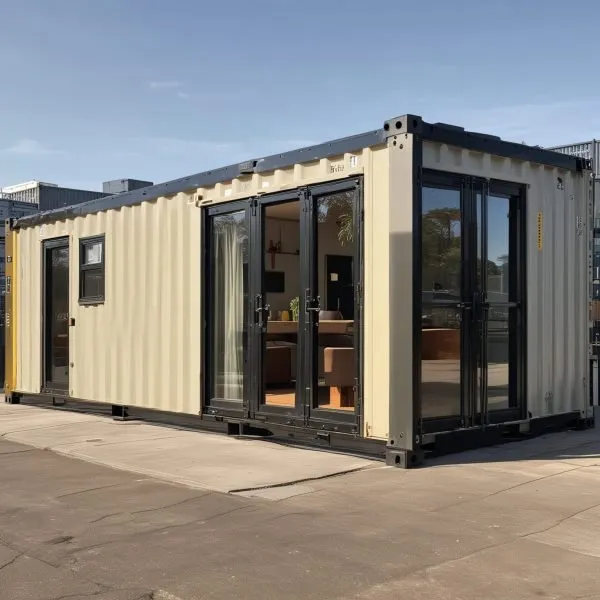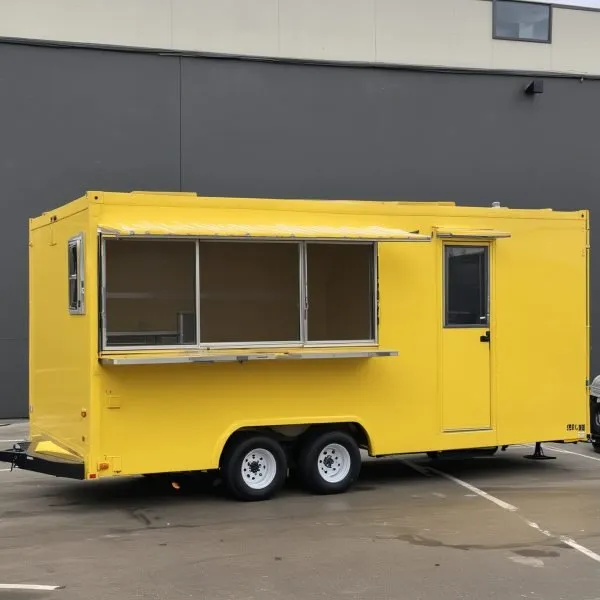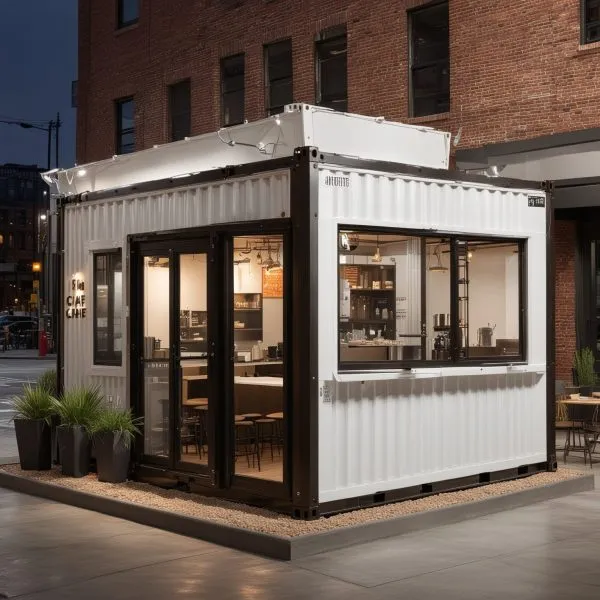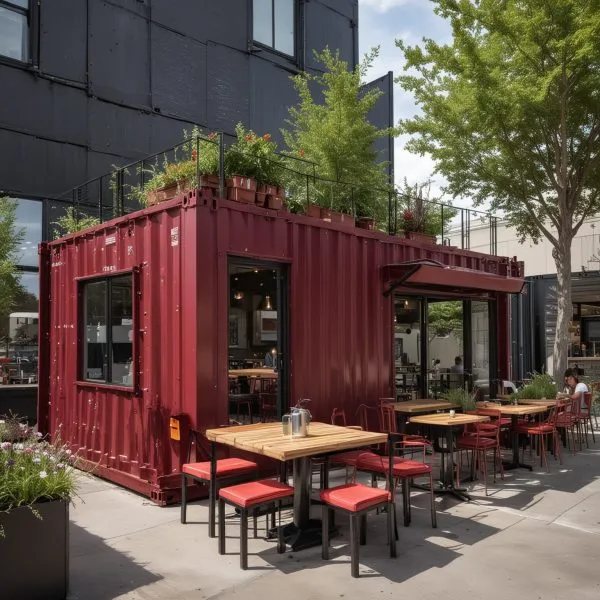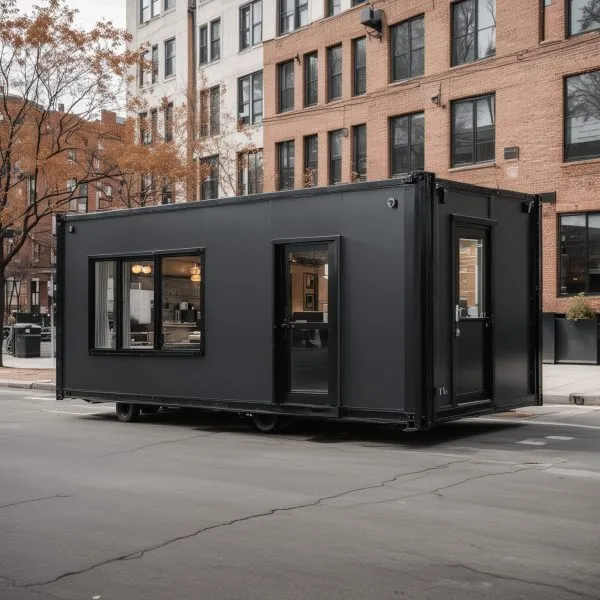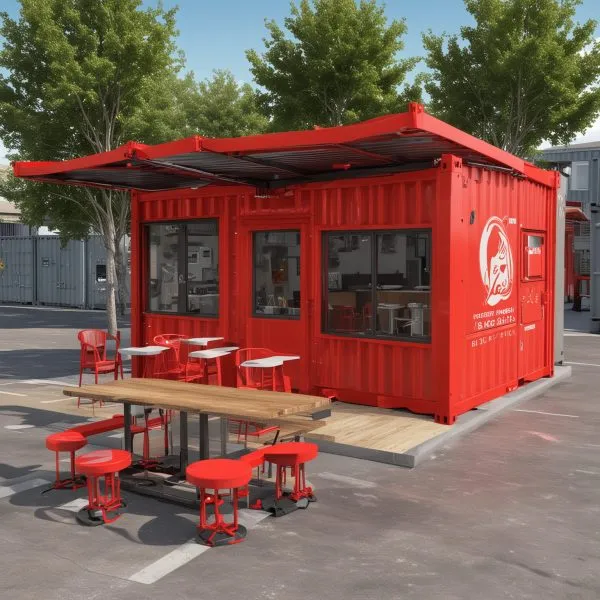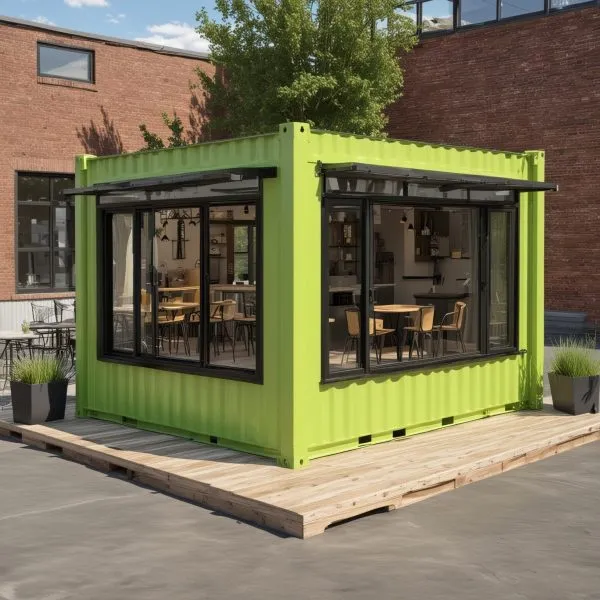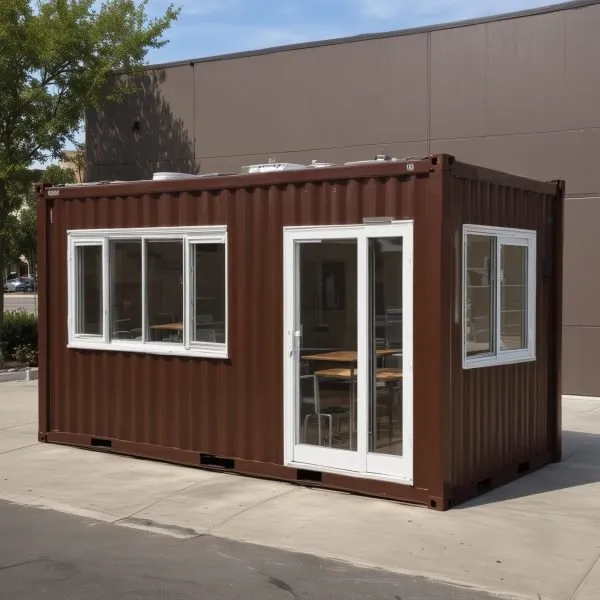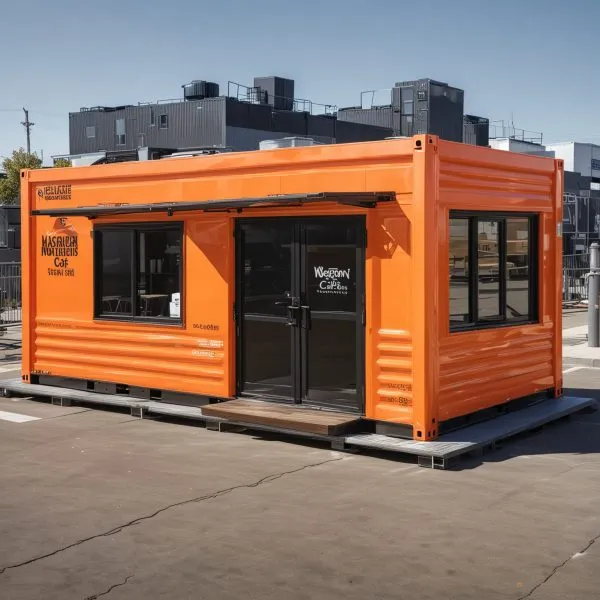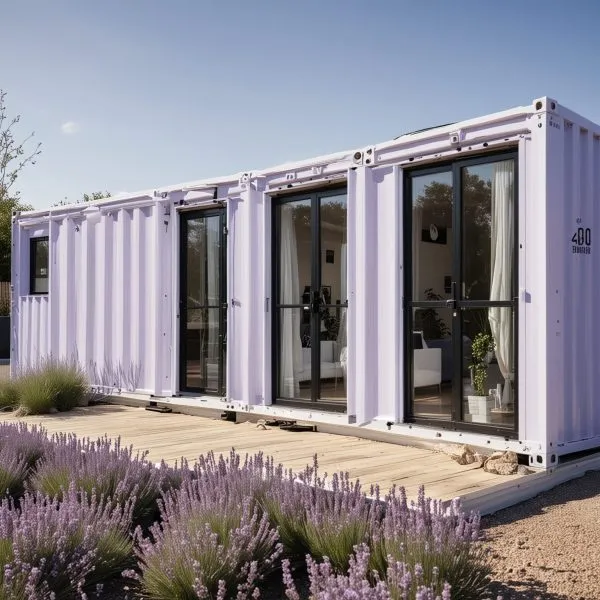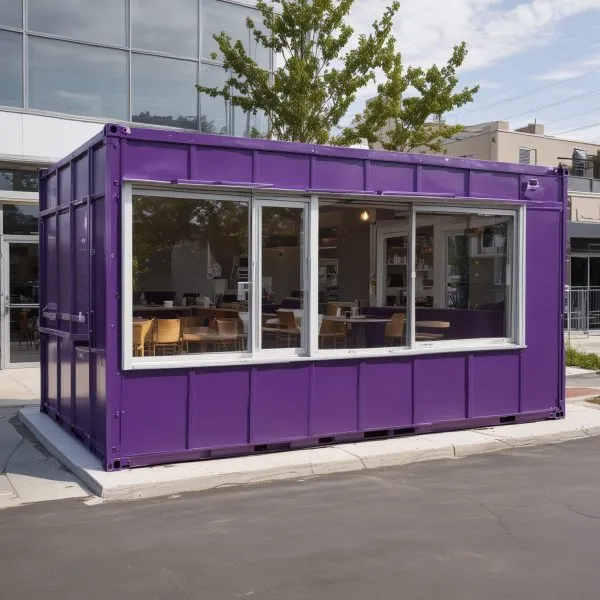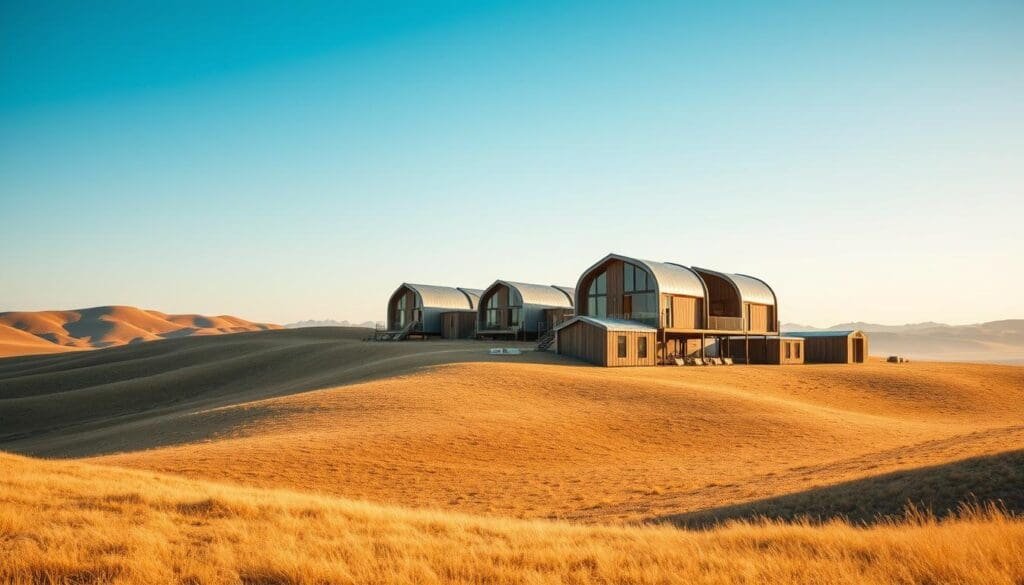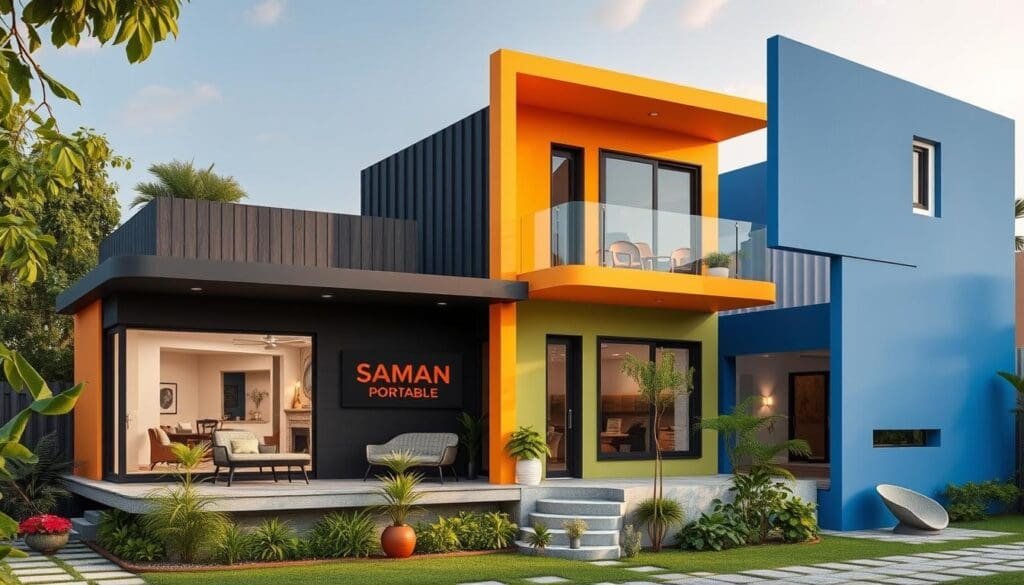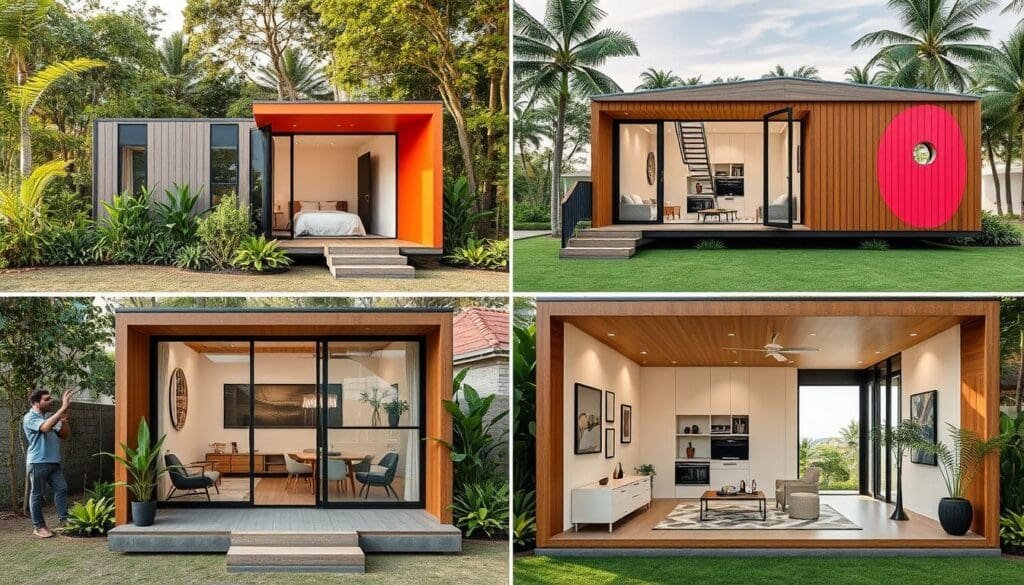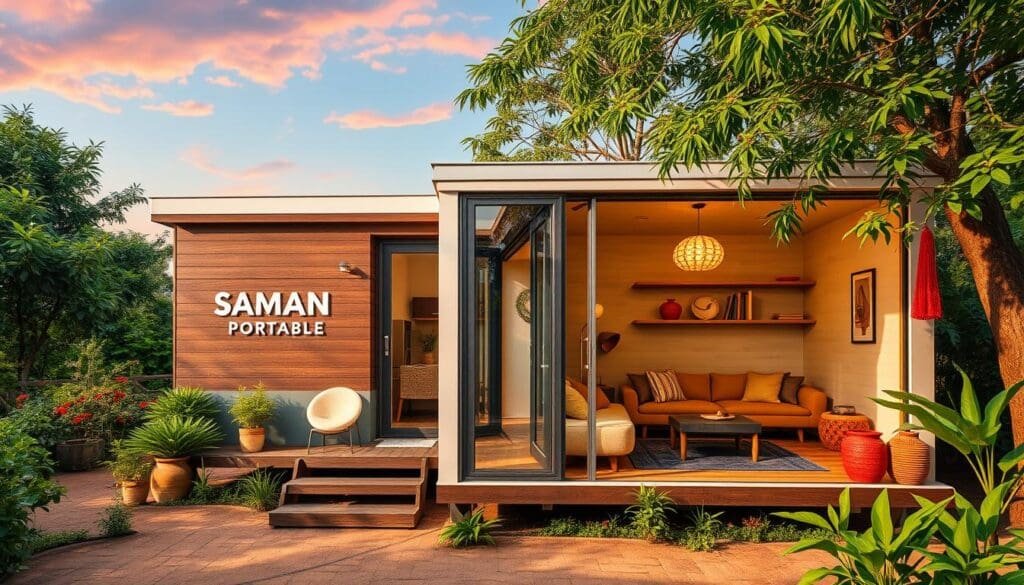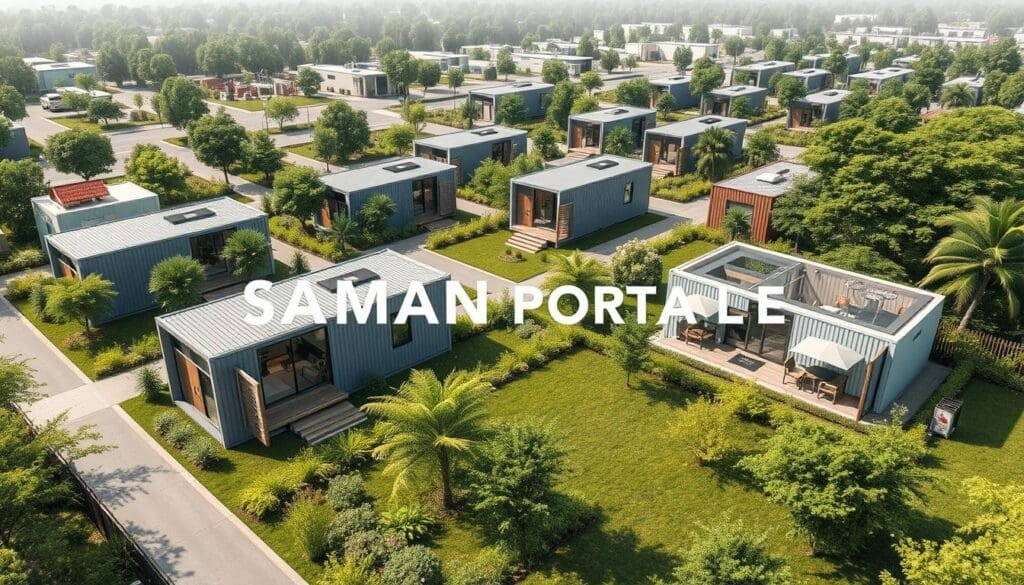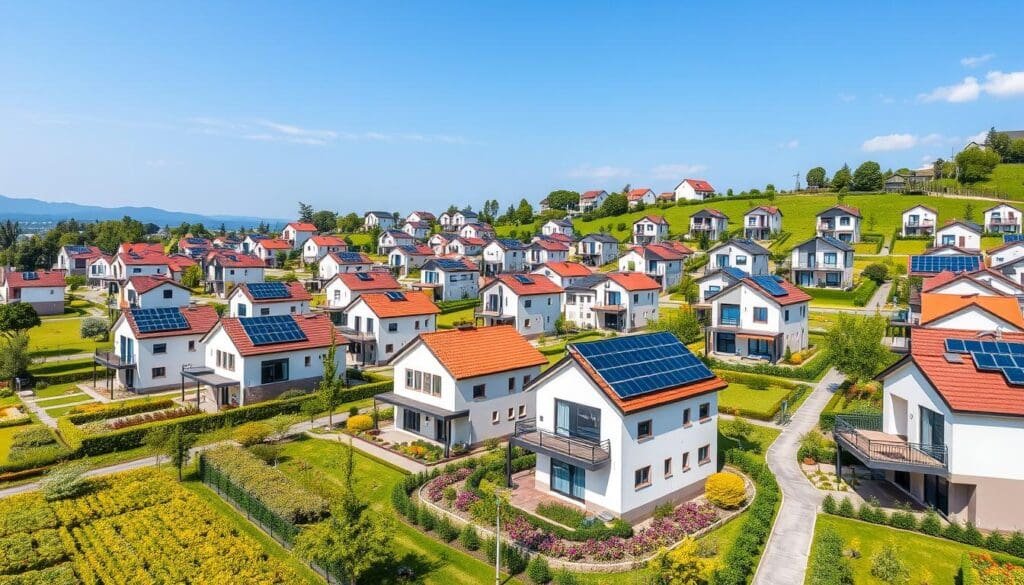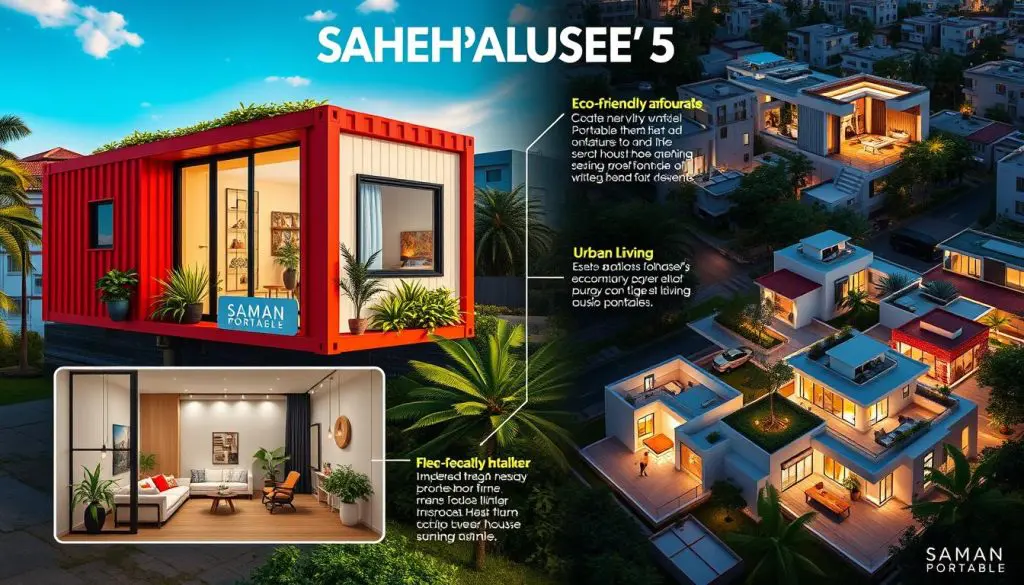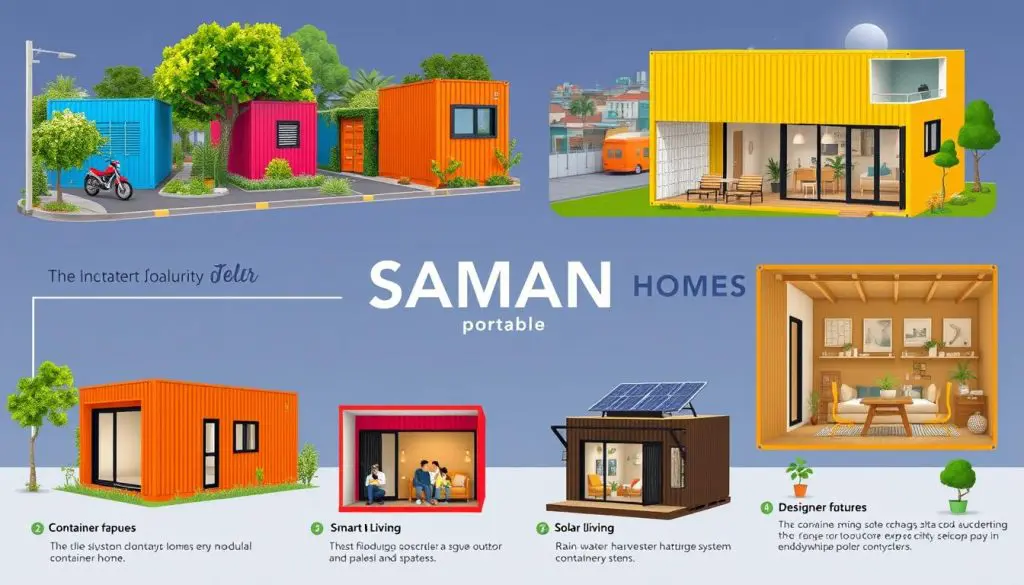Modular Container Homes For Sales: Affordable, Sustainable, and Innovative Living Solutions
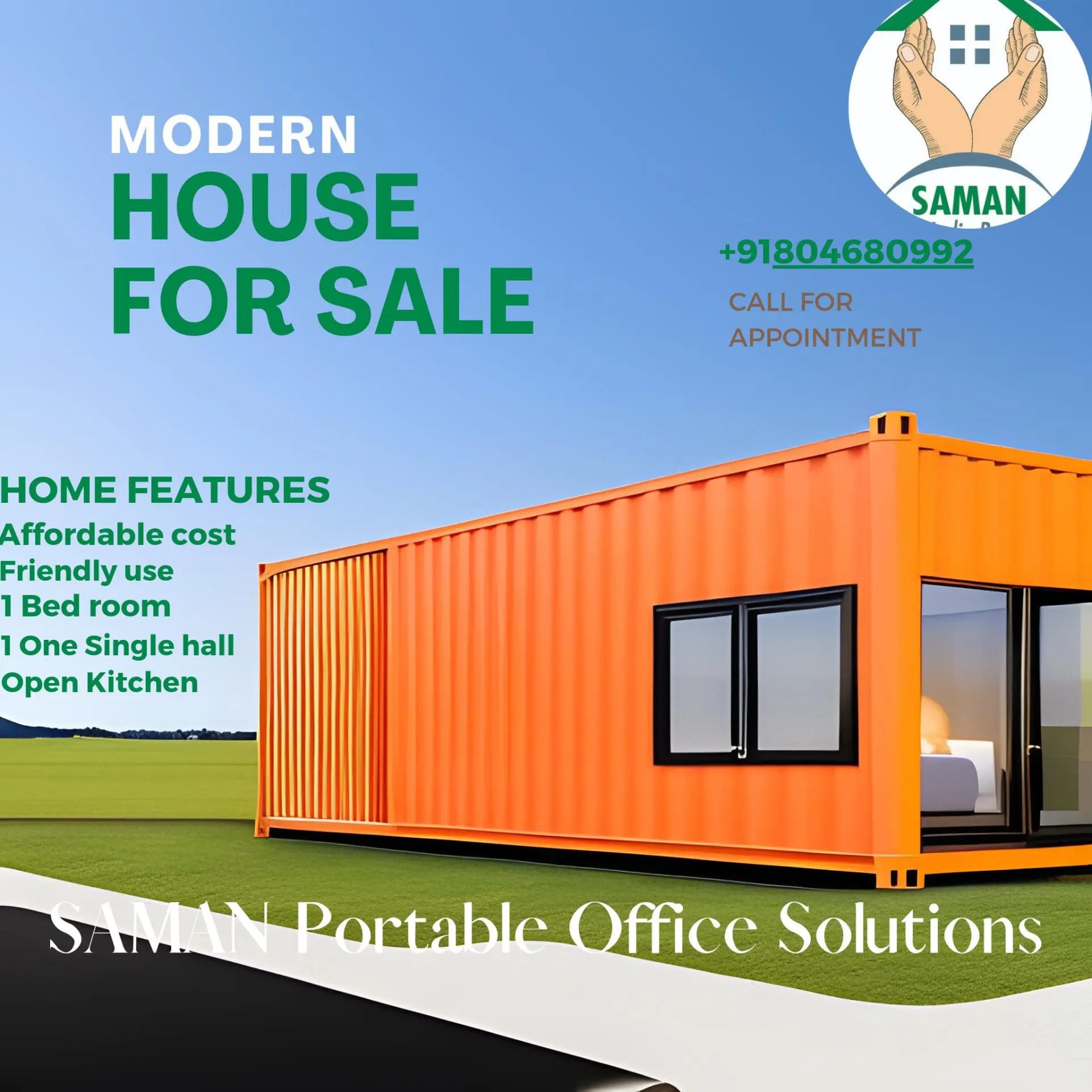
In today’s world, living in a way that’s good for the planet and our wallets is key. Modular container homes for Sales are a game-changer. Made from old shipping containers, they’re changing how we see homes. They’re not just eco-friendly and budget-friendly. They also open up a world of design possibilities.
Let’s dive into how container home architecture has grown. See how this modular way is shaping the future of living sustainably.
Key Takeaways
- Modular container homes offer affordable, sustainable, and customizable living solutions.
- The concept of container homes has evolved from the standardization of shipping containers, transforming the transportation industry and influencing modern architecture.
- Container homes embody the principles of upcycling, reducing waste, and providing cost-effective alternatives to traditional housing.
- These modular dwellings offer mobility, allowing for easy relocation and the ability to be stacked or combined for larger living spaces.
- The container home industry is driven by a focus on sustainability, eco-friendly materials, and a reduced carbon footprint.
Understanding the Evolution of Container Home Architecture
The journey of container home architecture started in 1956 with the creation of standardized shipping containers by Malcolm McLean. This innovation changed global trade and impacted architectural design. Today, container homes have evolved from industrial beginnings to become sustainable and affordable living spaces.
From Shipping Container to Living Space
Early adopters in Europe and Asia first used these steel containers in construction projects. This idea of turning shipping containers into homes grew, showing their potential as eco-friendly and affordable housing.
Historical Development of Container Housing
- The first use of a shipping container as a home was in the 1970s in the United States.
- In the 1980s, a patent for container homes was granted in the USA by Phillip C.
- The first two-story shipping container home was built in California in 2006, opening new possibilities.
Impact on Modern Architecture
Container homes have made a big impact on modern architecture. They challenge old building methods and offer a sustainable, flexible, and affordable option. Modular construction, eco-friendly container homes, and energy-efficient homes are now popular. They provide customizable container home kits for different housing needs and tastes.
The Growing Popularity of Sustainable Housing Solutions
The global market for container homes is booming. It’s expected to jump from $61.83 billion in 2023 to $108.70 billion by 2032. This growth is due to a rising interest in eco-friendly, affordable homes, especially in the United States.
The COVID-19 pandemic has boosted the demand for modern prefab homes, custom container homes, and modular housing solutions. People want homes that are efficient and don’t need a lot of land. This has made prefabricated modular homes and container living spaces more popular.
People love these homes because they’re good for the planet and save money. They come with energy-saving features, insulation, and green materials. This makes them appealing to those who want to live sustainably and cut down on costs.
- The demand for prefabricated homes with all amenities is rising post-COVID-19 due to the restrictions on concrete construction on farmland.
- Container houses are gaining popularity globally due to their environmentally friendly and affordable nature, with an increasing demand for second-hand shipping containers.
- Factors like efficient heating/cooling systems, insulation, and energy-efficient designs are driving the growth of the container homes market.
But, there are challenges too. Containers can rust and have a limited lifespan. These issues need to be solved for these homes to become even more popular.
Despite these challenges, the market is expected to keep growing. People and developers are looking for homes that are flexible, green, and meet today’s needs.
Modular Container Homes For Sales: Market Overview and Opportunities
The world is seeing more interest in modular container homes. People want homes that are green, affordable, and new. The market is expected to grow from $63.52 billion in 2023 to $98.96 billion by 2031. This growth is at a rate of 5.7% each year.
Current Market Trends
Most container homes are built on-site, but factory-built ones are gaining fans. They offer homes that are tailored and eco-friendly. Soon, more people will choose them for their green and affordable nature.
Price Ranges and Investment Potential
The price of container homes varies a lot. It depends on size, how customized it is, and where it’s located. But, they are often a smart investment. Analysts say the global market could hit USD 62,514.5 million by 2024, growing 7.00% each year after.
Regional Availability and Demand
- In 2024, North America, especially the United States, will lead the market. This is because housing costs are high there.
- Europe is seeing more interest in container homes. This is because of a growing desire for green living.
- Asia Pacific is expected to grow the fastest. It will see a 9.0% CAGR from 2024 to 2031. This is because of a shift towards modular and compact homes.
- Latin America and the Middle East are also getting more interested. They see container homes as a smart and affordable choice.
Container homes are becoming popular for their green, customizable, and affordable nature. As the market grows, container home builders, modular architecture experts, and developers will see more opportunities. They will focus on compact housing options and off-grid container homes.
Benefits of Choosing Container Homes
Container homes are a smart choice for those wanting sustainable, affordable, and flexible living. They use old shipping containers, which is good for the environment. This makes them a great option for those looking for a different kind of home.
Container homes are very durable. They can handle tough weather, keeping your home safe and strong. This means your home will last longer and you’ll feel more secure.
These homes are also easy to change and grow with you. You can explore customizable container homes to fit your lifestyle, from small studios to big houses. This lets you design your home just the way you want it.
Another great thing about container homes is they can move. This makes them perfect for people who like to change their living situation. You can move them to different places, like off the grid or for seasonal changes.
In summary, container homes offer many benefits. They are good for the planet, affordable, and can be customized. As more people look for eco-friendly homes, container homes are becoming a popular choice.
Design Possibilities and Customization Options
Container homes open up a world of design and customization. They let homeowners create spaces that fit their unique needs and tastes. From smart interior layouts to eye-catching exterior changes, these homes are incredibly versatile.
Interior Layout Solutions
The inside of a container home can be made into a smooth, multi-use space. Design tricks like open layouts and clever storage make rooms feel bigger. You can add movable walls, lofted bedrooms, and built-in storage to make it your own.
Exterior Modifications
Container homes are a blank slate for design. You can add windows, doors, and even link several containers together. These changes can turn a simple container into a modern, eye-catching home that’s different from regular houses.
Multi-Container Configurations
Linking several containers lets you build big, custom homes. You can go from a cozy studio to a big family home. This way, you can make homes with unique layouts, more bedrooms, and even multi-story designs.
The design and customization options of portable housing units and residential container buildings give homeowners the power to create container home features that match their modern modular homes and green construction solutions. This flexibility is why these container homes are becoming more popular.
Construction Process and Timeline
Building a modular container home is a unique and efficient process. It offers homeowners a quicker path to occupancy than traditional construction. The journey starts with selecting and modifying the shipping containers for the living space.
These containers are then insulated, finished on the interior, and equipped with essential utilities. This creates a comfortable, eco-friendly living solution.
The modular nature of prefab container housing allows for much of the work to be done off-site. This significantly reduces the construction timeline. On average, a basic container home delivery and installation can be done in as little as a week. However, customizations and additional amenities may extend the process by several weeks.
- Site preparation, including clearing debris and leveling the ground, lays the foundation for a smooth build.
- Rust treatment and prevention are crucial steps to ensure the long-term structural integrity of the shipping containers.
- Proper insulation, tailored to the local climate, is essential for maintaining optimal temperature and energy efficiency within the modular container homes for sales.
- Obtaining necessary permits and navigating zoning regulations can vary by region, so careful planning is advised to avoid costly delays.
The construction of prefab container housing and shipping container residences emphasizes the importance of meticulous planning and execution. By adhering to best practices and leveraging the inherent advantages of modular design, homeowners can enjoy a seamless transition into their eco-friendly modular living spaces. They may also have the option for off-grid container dwellings as an added benefit.
Environmental Impact and Sustainability Features
Sustainable modular construction, like mobile container homes, is changing the affordable housing scene. These homes are eco-friendly and offer many benefits over traditional buildings.
Energy Efficiency Solutions
Container homes have top-notch insulation for better temperature control and less energy use. They often come with solar panels and energy-saving appliances. This makes them very energy efficient and cuts down on carbon emissions.
Eco-friendly Materials
These sustainable modular homes use recycled steel and other green materials. This helps the environment and supports a circular economy. Using old shipping containers shows a big commitment to sustainable containerized dwellings.
Carbon Footprint Reduction
By using recycled materials and needing fewer new resources, mobile container homes cut down on carbon emissions. Their small size and smart use of space also mean less energy use. This makes them a greener choice for homes.
Container homes have cool features like rainwater harvesting and greywater recycling. As more people want eco-friendly modular homes, these options are leading the way. They’re making the housing industry more responsible and mindful of resources.
Types of Container Homes Available
The world of portable container living has grown a lot. It now offers many options for different needs and tastes. Shipping container architecture has changed how we see sustainable and creative living spaces.
There are many types of container homes. You can find single-container studios or big family homes. Even luxury mansions are made from containers. Some focus on being eco-friendly, while others look modern and fit well in cities.
Looking for a cheap home or a fancy one? Container homes have it all. You can move them or keep them in one place. They’re not just for homes; they’re also used for offices, cafes, and more.
There are over 1,000 types of prefabricated homes available. Prices start at ₹300 per square foot and go up to ₹15,00,000. This shows they fit many budgets. Suppliers get 79% to 82% of inquiries, showing people want these homes.
Variety in Materials and Designs
Container homes are made from steel, wood, and more. This gives you many choices for looks and function. They can be farmhouses, hotels, or personal homes, showing they’re very flexible.
- Modular container homes
- Portable container homes
- Prefabricated container homes
- Eco-friendly container homes
Container homes are weather-proof, portable, and eco-friendly. They’re changing how we live in a sustainable way.
If you like portable container living or compact modular construction, there’s a lot to explore. Shipping container architecture offers many chances for creative and off-grid living solutions.
Legal Considerations and Building Regulations
Understanding the legal side of eco-friendly construction is key. The rules for placing transportable dwellings, like container homes, vary by area. These rules include zoning laws and building codes.
Zoning Requirements
Zoning laws in many places control where container homes and other affordable housing options can go. These zoning requirements might limit where compact living spaces can be built. Sometimes, you need to change the zoning to get a container home approved.
Permits and Certifications
To build container homes and other transportable dwellings, you need permits and safety checks. These ensure the home is safe and meets local building codes. Following these rules is crucial to avoid legal problems and delays.
Dealing with legal considerations and getting the right permits and certifications can be tough. It often takes experts like architects, engineers, and lawyers. By following these rules, you can make sure your eco-friendly construction is safe and legal. This way, you provide sustainable home design that benefits the community.
Cost Analysis: Traditional vs Container Homes
Choosing between traditional and container homes affects your budget. Customizable modular homes and prefab container homes are often cheaper at first. This is because they use recycled materials and build faster.
The cost of container house plans changes based on location, design, and local rules. A modular home design from Bob’s Containers starts at $40,000. But, adding custom touches and site prep can increase costs.
Traditional homes might cost more upfront. Yet, they can hold their value better and offer financing options. Container homes save money in the long run. They use less energy and need less upkeep, making them a smart choice for sustainable housing solutions.
To really compare costs, you need to look at all the factors. This way, you can choose what fits your budget and needs best.
Innovative Features and Smart Home Integration
The demand for portable homes, modular construction, and eco-friendly container homes is on the rise. The container home industry is now focusing on innovative features and smart home integration. These advancements make these homes more affordable and energy-efficient. They also show how container homes can change the future of affordable housing.
Now, you’ll find automated climate control, energy management tools, and IoT-enabled appliances in container homes. Solar power integration, battery storage solutions, and advanced insulation technologies make these homes even more energy-efficient. Smart home features let residents control lighting, security, and environmental systems from anywhere. This creates a seamless and connected living experience.
- Expandable elements or modular additions for flexible living spaces
- Innovative water conservation systems and sustainable waste management solutions
- Integration of sustainable materials, such as recycled steel and energy-efficient windows
These advanced features improve the comfort and livability of container homes. They also highlight the potential for sustainable, tech-savvy living. As more people look for portable homes and modular construction, innovative technologies and smart home solutions will be key. They will shape the future of eco-friendly container homes and affordable housing.
Maintenance and Longevity Considerations
Container home kits and modern prefab homes are becoming more popular. It’s important to think about how to keep them in good shape for a long time. Taking care of these homes is key to their lasting value.
Weather Protection: Safeguarding the Container’s Integrity
Container homes are built with strong steel. But, they need regular checks to stay strong, especially in wet or salty air. Using the right insulation and coatings helps keep them safe from the weather.
Maintaining Structural Integrity
Keeping a container home stable and safe is very important. Experts should check it often to find any problems. Fixing the foundation and keeping the structure sound is essential for its long-term safety.
With the right care, container homes can last as long as or even longer than regular houses. Taking steps to protect them from the weather and keeping them structurally sound means they can be enjoyed for many years.
Proper maintenance and longevity considerations are essential for ensuring the durability and long-term viability of custom container homes and prefabricated modular housing solutions.
Off-Grid Living Possibilities
Container homes are great for off-grid living. They are small and use energy well, perfect for solar panels and wind turbines. Many container homes also collect rainwater, have composting toilets, and recycle greywater to save resources.
Some container homes can move to remote places, making self-sufficiency easier. They use efficient appliances and smart systems to save energy. This shows they can support a green, independent lifestyle.
The 20′ Foldable Container Home is quick to set up, taking less than 1 hour with three workers. The 20′ Flat Packed Container Home also sets up fast, in under 1 hour with 3 workers. These are great for those who want a modular architecture for off-grid living.
For a full off-grid setup, consider the One Bedroom 40′ Container Home. It comes with everything inside. Or, look at the Bryce Canyon 40′ Studio Container Home, which is 95% done with plumbing and electrical ready.
The 2-3 Expandable Bedroom Shipping Container Home lets you add walls for a custom space in under an hour. The Mesa Verde 2 Bedroom Shipping Container Home can be built with two 20′ or two 40′ containers. This gives you options for different container living spaces.
Container homes are a top pick for those wanting an off-grid, green lifestyle. They offer luxury container homes and modular architecture too.
Conclusion
Container homes are changing the game in compact housing options. They are affordable, sustainable, and innovative. They solve today’s housing problems by offering green, customizable homes.
The growth of prefab modular housing is making shipping container homes more popular. These homes are becoming a good choice instead of traditional houses. With new designs and tech, container homes are set to be a big part of our future homes.
Modular home builders are also seeing the potential of container homes. They combine prefabrication, customization, and green building. This makes container homes a great choice for affordable, sustainable living. As people want homes that are flexible and good for the planet, container homes are becoming a top choice.
FAQ
What are the benefits of choosing container homes?
Container homes are good for the planet and your wallet. They use old shipping containers, cutting down on waste. This makes them cheaper than regular houses.
They can be changed and added to easily. This makes them strong against weather. Plus, they can move, perfect for those who like to travel.
What are the design possibilities and customization options for container homes?
Container homes can be made in many ways. You can make them small or big, depending on what you need. They can be cozy or roomy, fitting your style.
They can be made to look unique. You can add windows and doors. You can even use more than one container to make a bigger space.
How do the construction process and timeline for container homes compare to traditional homes?
Building a container home is different from a regular house. It starts with picking and fixing containers. Then, you add insulation, finish the inside, and put in utilities.
Because they’re made in parts, they go up fast. This means you can move in sooner. It’s quicker than building a regular house.
How do container homes address environmental impact and sustainability?
Container homes are good for the planet. They use less energy because they’re well-insulated. They can even use solar power.
They’re made from recycled materials. This cuts down on waste. They also save water and manage waste well.
What types of container homes are available?
There are many kinds of container homes. You can find small studios or big family homes. Some are fancy, others are simple.
Some are made for living off the grid. Others fit right into the city. They can be moved or stay put, depending on what you want.
What legal considerations and building regulations apply to container homes?
Building a container home has rules to follow. These vary by place. You might need special permits and to meet certain standards.
Some places have rules about where you can put them. You might need to change zoning laws. It’s important to follow these rules to make sure your home is safe and legal.
How do the costs of container homes compare to traditional homes?
Container homes are often cheaper to start. They use old containers and build fast. But, adding special features can raise the price.
Regular houses might cost more upfront. But, they can be worth more and have more financing options. Container homes can save money in the long run, especially if you use less energy.
What innovative features and smart home integration are available in container homes?
Container homes are getting smarter. They can control your home with your phone. They use solar power and save water.
They can grow with you. You can add more parts as you need them. They’re at the forefront of green, techy living.
How do container homes address maintenance and longevity considerations?
Keeping a container home in good shape is important. You need to protect it from the weather and check it often. This keeps it strong.
Steel is durable, but you still need to take care of it. Regular checks and upkeep are key. With the right care, they can last a long time.
What are the possibilities for off-grid living with container homes?
Container homes are great for living off the grid. They’re small and use less energy. You can add solar panels and collect rainwater.
They can be moved to remote places. This makes them perfect for a self-sufficient life. They’re efficient and can be very green.
 Container Cafe
Container Cafe